SF Pride board names new president
by Eric Burkett
San Francisco Pride has a new president.

Nguyen Pham who, until his selection on November 7, served as vice president, was elected to the post by fellow board members. Pham is the first gay Vietnamese man to hold the position.
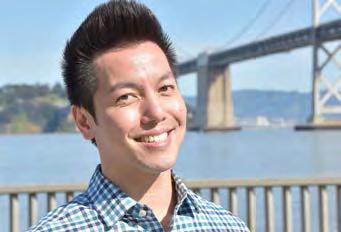
Pham, who lives in the LGBTQ Castro neigh borhood, replaces former president Carolyn Wysinger, a lesbian who was elected last week to the El Cerrito City Council. Wysinger served as Pride president from 2020 until her term ended earlier this month and will remain on the Pride board.
SF Pride interim Executive Director Suzanne Ford, a trans woman, congratulated Wysinger on her victory.
New mural graces SF City Clinic

Staff from the San Francisco City Clinic, muralists, and others from the Department of Public Health celebrated the dedication of a new mural, “Sanc tuary for Health,” on the facade of the clinic’s building at 356 Seventh Street Tuesday, November 15. A news release from DPH noted that the mural was completed in collaboration with Precita Eyes Muralists, with fund ing provided by the federal Centers for Disease Control and Prevention. City Clinic is an outpatient center
where medical staff work to prevent, diagnose, and treat sexually transmitted infections and HIV, as well as serve the sexual health needs of San Franciscans. “This mural represents the deep collaboration between staff, clients, and community across San Francisco and is an inspiring addition to the neighborhood that will add a renewed sense of welcome as patients enter the clinic,” stated Dr. Grant Colfax, a gay man who is the city’s health director.

Gay, HIV-positive SF supe Dorsey wins full term
by Matthew S. Bajko

In winning a full term on the San Fran cisco Board of Supervisors, gay District 6 Supervisor Matt Dorsey has become the city’s first HIV-positive elected supervi sor. His win also continues the presence of two gay men on the board, as gay District 8 Supervisor Rafael Mandelman easily won his November 8 reelection bid.
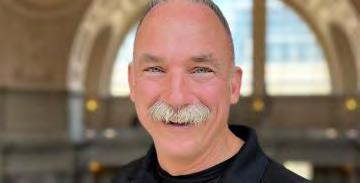






Mandelman first won election to the seat that covers the LGBTQ Castro district in a June special election in 2018 where he trounced gay District 8 Supervisor Jeff Sheehy, a longtime survivor of HIV who had been appointed to fill a vacancy. In the November general election that fall, Man delman easily won a full four-year term.
Monterey voters elect gay mayor, out Latina sheriff
by
In
S. Bajko
SF was at epicenter of lesbians helping gay men during AIDS crisis
by Cynthia Laird
time activist, recalled in a recent phone interview with the Bay Area Reporter. She knew then, she said,
Ewing had gone to Daddy’s in her capacity as president of the board of the AIDS Emergency Fund, a nonprofit founded in 1982 by gay men that provided cash payments to people living
Serving the lesbian, gay, bisexual, transgender, and queer communities since 1971 www.ebar.com Vol. 52 • No. 46 • November 17-23, 2022 When is the Best Time to Use Our Low-interest Visa? n Columbus Day Sales n Black Friday Sales n Christmas Shopping n New Year’s Parties n 6 All of the Above! Visit SanFranciscoFCU.com/holiday-shopping SFFCU BAR Holiday Visa Strip Ad 9.75x2.25 v03.indd 1 9/27/22 2:10 PM 03 09
Crispin Hollings dies
ARTS 13 13 The
Bernice Bing Arab Film Festival
Rick Gerharter
When Leslie Ewing walked into Dad dy’s, a Castro gay bar, in the mid1990s during the horrible years of the AIDS epidemic in San Francisco, she was non plussed by a comment she overheard.
“I heard, ‘I smell fish,’” Ewing, a lesbian long
that her role was important.
Val Robb, right, a registered nurse, visits Ambassador Hotel resident David for a checkup in 1993 in San Francisco.
See
Paul Fusco/Magnum Photos
page 3 >>
Courtesy SF Pride
Nguyen Pham is the new San Francisco Pride board president.
Matthew
Monterey County voters elected as their first lesbian and first Latina sheriff Tina Nie to, who will also serve as the county coroner, in the November 8 general election. Meanwhile, in the coastal tourist mecca of Monterey, City
Councilmember Tyller Williamson has become his city’s first gay and first Black mayor. Currently the police chief of the seaside city Marina, Nieto is a 33-year veteran of the Los Angeles Police Department. Once sworn into office, she will be the first out LGBTQ Latina sheriff in California.
Tyller Williamson, left, is Monterey’s first out and first Black mayor. Tina Nieto is Monterey County’s first lesbian and Latina sheriff.
Courtesy the campaigns
Frank Jang via Facebook District 6 Supervisor Matt Dorsey spoke at the Chinese American Democratic Club in October.
See page 2 >> See page 10 >> See page 8 >>
ARTS
Compton's site landmarked
Dems launch recount fund for gay CA House candidate Rollins
by Matthew S. Bajko
With the Associated Press calling the California 41st Congres sional District race for Congress member Ken Calvert (R-Corona), and the incumbent declaring victory, Democrats are now raising money for a recount fund on behalf of gay candi date Will Rollins.
As of Tuesday evening, Rollins was behind by 6,505 votes against Calvert, 69, a conservative Donald Trump supporter. Riverside County elections officials reported they still had ap proximately 67,000 ballots to count.
Yet the AP declared Calvert the winner Monday night. Shortly there after, he issued a statement thanking Riverside County voters for electing him to his 16th term in Congress.
“As I said throughout this cam paign, I will work to take our country in a different direction from the path it’s on and advocate for policies that will curb inflation, lower energy prices by increasing American production, address our border crisis, and reduce crime,” stated Calvert. “This election demonstrated that Riverside County voters are more interested in people serious about solving our challenges than personal politics. In the end, it’s clear that voters sent a strong message rejecting the gutter politics of lies and personal attacks from an out-of-town extremist liberal.”
Tuesday morning Rollins, 38, a former federal prosecutor, acknowl edged in a tweet that the latest vote count wasn’t the news “we hoped for. We know we face an uphill climb but I’ve been adamant that the democrat ic process must play out. With many votes still outstanding, the next round of ballots released tonight will pro vide more insight on where this race stands.”
He told his supporters he would have more to say after elections of ficials posted another vote count up date around 6 p.m. Tuesday. Yet, in the afternoon, South Bay Congress member Zoe Lofgren (D-San Jose) announced she was raising funds to help cover the cost of a recount in Rollins’ race.
“Will Rollins’ race is preparing for a recount because the MAGA insane Republicans are not backing down with a loss,” wrote Lofgren in her emailed pitch for $10 donations, which would be split between Rol lins and nine other California House candidates who ran in close elections November 8. “The best way to gear up for a recount is to prepare in advance.
Will’s team is gathering the best legal team possible to win this fight, but they can’t do it without your help.”
Lofgren added, “This Midterm Election is far from over.”
Rollin’s campaign declined to com ment Tuesday afternoon on if it plans to seek a recount in the race.
As the Bay Area Reporter noted in a November 14 online article, Rol lins and Democratic officials, such as House Speaker Nancy Pelosi (D-San Francisco), had asked voters in the Southern California congressional district to check to make sure their mailed-in ballots hadn’t been rejected due to issues with their signature or a missing date.
The process is called “ballot cur
ing.” Impacted voters have 30 days to submit a correction affidavit in order to make their vote count.
“That’s what the process of correct ing a minor discrepancy on a ballot is called. If you’re an eligible voter and there’s an issue with your ballot veri fication, you can still fix it!” Rollins tweeted November 14.
Pelosi had asked people to sign up to either make phone calls or canvass in the targeted districts in several states where Democratic House can didates came up short via the website https://bit.ly/2lQu6dU.
“County elections officials have identified thousands of voters who either did not sign their ballot or whose signature does not match their voting registration record – and who can ‘cure’ their ballot. We have phone banks and canvasses to reach them –and WE NEED YOUR HELP,” wrote Pelosi in an email Monday to her sup porters. “Please sign up to reach voters who need to cure their ballots to make sure every vote is counted as cast.”
Annise Parker, LGBTQ Victory Fund president and CEO, had told the B.A.R. Monday afternoon that her organization remained hopeful that Rollins could pull off a win in the newly drawn congressional district that includes the LGBTQ retirement and tourist mecca of Palm Springs. But Parker also acknowledged, “this is a red seat” so a victory by Rollins “is not easy but always possible.”
Speaking to the B.A.R. by phone the day after the November 8 general election, Rollins had predicted his race would be “close.” But he expressed optimism that his first-place finish on election night would eventually stand as additional ballots are counted due to Calvert’s only receiving 48% of the vote in their June primary race.
He had been banking on LGBTQ voters from the Palm Springs area to help put him into first place against Calvert, who has repeatedly voted against LGBTQ rights over the last two decades. Only this year, running against a gay candidate in a more purple district, did Calvert vote in support of marriage equality.

Since last week Calvert had insisted he would be declared the winner once
all ballots were counted. In his state ment Monday night, he acknowl edged he would be representing a dif ferent House district in Congress.
“It’s clear that this district, like our country, is narrowly divided on a par tisan basis. I am proud of my record of delivering results for Riverside Coun ty by working in a bipartisan manner throughout my career,” stated Calvert. “As I represent a new district with new communities, I remain committed to working towards solutions with any one who is interested in addressing the needs of our region.”
Rollins is the fifth out West Coast House candidate to fall short in their races. In Oregon, lesbian former Santa Clara City Councilmember Jamie McLeod-Skinner on Sunday conceded her contest for the 5th Con gressional District. She defeated mod erate Congressman Kurt Schrader (D-Canby) in their June primary race but lost in the general election against Republican Lori Chavez-DeRemer.
Three Los Angeles-area out House candidates had tried to oust incum bents. Gay progressive Derek Mar shall lost to Congressmember Jay Obernolte (R-Hesperia) in the state’s 23rd Congressional District.
In the CD 30 race, Congressmem ber Adam Schiff (D-Los Angeles) defeated nonbinary drag queen G “Maebe A. Girl” Pudlo. Meanwhile, progressive lawyer David Kim is trail ing Congressmember Jimmy Gomez (D-Los Angeles) in CD 34 by 4,040 votes.
The Golden State’s congressional delegation did double this year in out members. Gay Congressmem ber Mark Takano (D-Riverside) eas ily won reelection to a fifth two-year term in the 39th Congressional Dis trict.
Joining him on Capitol Hill is gay Long Beach Mayor Robert Garcia, elected to the 42nd Congressional District along the coast of Los Ange les County. From Lima, Peru, Garcia is the first openly gay immigrant to serve in Congress and was in Wash ington D.C. this week for the orienta tion for new congressional members. t
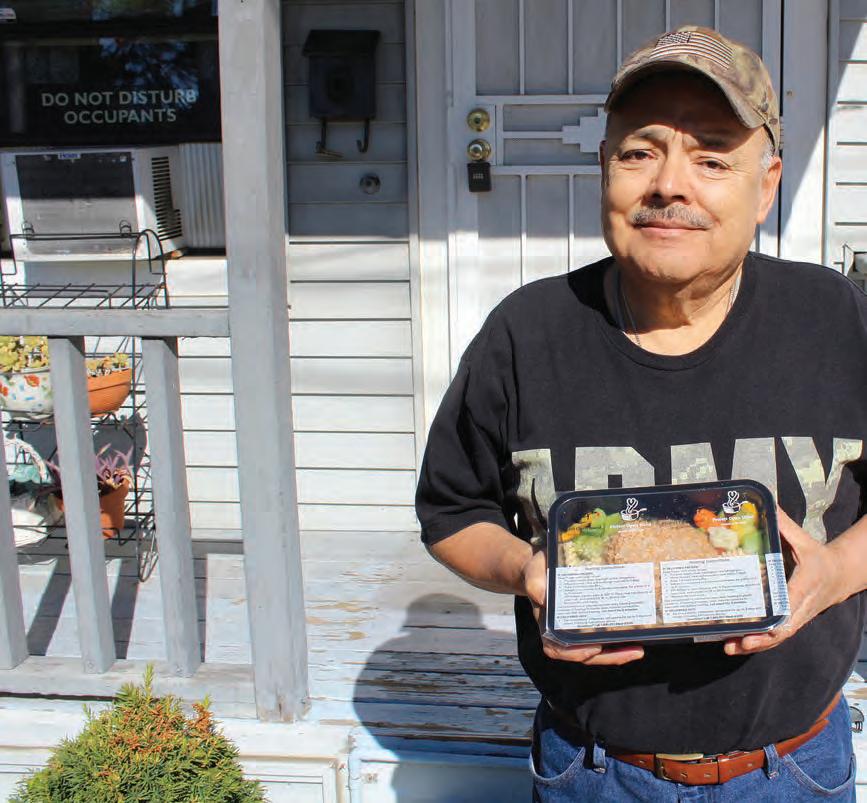
Help provide a Meal that Heals this Holiday Season
This holiday season you can be a part of giving a gift of a meal that heals. Volunteer your time in our kitchen or a give a gift to support our efforts to provide over 2,500 life-saving meals a day to our thousands of clients in the Bay Area who are in need of healthy nutrition. Visit openhand.org.
Another way to help during the Holidays is to attend our 30th Hand to Hand Gala fundraiser!
Scan the QR code or visit the website to purchase tickets. https://H2H22.givesmart.com
Musical guests include Spencer Day and DJ Airsun
Dorsey became the second known person living with HIV to serve on the board when Mayor London Breed appointed him last spring to the vacant District 6 seat. Former supervisor Matt Haney resigned when he was elected to a vacant state Assembly seat.
His chief of staff at City Hall, Honey Mahogany, had sought to be appointed to succeed her boss then ran against Dorsey in last week’s election. She was vying to become the city’s first transgender and first LGBTQ Black supervisor.
But Dorsey defeated Mahogany with 53.88% of the vote to her 46.12%, according to the unofficial returns. Longtime Black transgender advocate Ms. Billie Cooper and Black labor leader Cherelle Jackson both received less than 4% of the vote.
“Better than it feels being ap pointed, but it’s also humbling,” Dorsey told the Bay Area Reporter about his victory.
After elections officials updated the vote count November 14, Ma hogany conceded the race and called Dorsey to congratulate him.
In a tweet thread she said she was taking “a much needed break with friends and family” before return ing to work as chair of the San Francisco Democratic Party and reopening the Stud Bar – “the best gay bar in San Francisco,” she wrote – as part of its collective ownership.
“I’ve been in public service here in my hometown for decades, and I’m not going anywhere! I’m looking forward to working with Supervisor Dorsey on things we agree on: building housing, stop ping the fentanyl crisis, and saving our city’s struggling small busi nesses,” tweeted Mahogany, a na tive of the city.
A third gay supervisor could join Dorsey and Mandelman on the board in January should for mer journalist Joel Engardio de feat District 4 Supervisor Gordon Mar. While there have been three LGBTQ supervisors at one time on the board in past decades, there has never been a trio of gay men serv ing on it at once.
As of Tuesday, Engardio was leading in the race with 51% of the ballots counted for a lead of 498 votes. But with 15,500 additional ballots yet to be counted, he told the B.A.R. it could be Thursday or Friday until the contest is called.
“Still too close to call,” he wrote in a texted reply Tuesday.
Engardio and Dorsey both landed in first place on election night and continued to lead with each subse quent vote count update. Progres sives have argued they were able to do so because the city’s redistricting task force earlier in the year gerry mandered the supervisor districts to make it easier for moderates like the two gay leaders to win.
2 • Bay area reporter • November 17-23, 2022 t
us
The
to
Join
on Friday, December 9th at
Hibernia for our 30th Annual Hand
Hand celebration. This year’s event will include multi-levels of entertainment, music, and local fare inspired by Bay Area chefs.
30 Years of
<< Election 2022
Southern California House candidate Will Rollins trails his Republican opponent, as Democrats have launched a fundraising drive to help pay for a recount.
Courtesy Facebook
See page 11 >>
<< SF supe From page 1
SF supes OK landmark status for Compton’s site
by Eric Burkett
The San Francisco Board of Supervisors on Tuesday vot ed unanimously to approve local landmark status for the intersec tion of Turk and Taylor streets in the Tenderloin and the facade of the old Compton’s Cafeteria, site of a 1966 protest by trans people.

The November 15 vote followed a unanimous recommendation November 14 by the board’s land use committee.
While the exact date has been lost to history, the August 1966 riot at the diner, which was fre quented by LGBTQ people, was one of the first uprisings against police harassment by queer peo ple, three years before the more famous Stonewall uprising in New York City.
The supervisors voted unani mously to approve the measure immediately following a lengthy discussion of the Draft Housing Element 2022 update. Supervi sor Dean Preston (District 5), a straight ally, sponsored the mea sure, calling it a symbol of bravery.
“At Compton’s Cafeteria, the queer community, in the face of state violence, stood up and said, no more,” Preston stated in a news release. “That act of courage and bravery has reverberated over time and generations, and has inspired countless marginalized people, especially in the queer community, to demand respect, equal treatment and self-determi nation. I am proud that the city will recognize this historic site for generations to come.”
A few people addressed the committee hearing, expressing their gratitude for the measure. One speaker, identified as Yaya Day Mendoza in the meeting
“The entire San Francisco Pride family would like to congratulate our board member, and former board president, Carolyn Wysinger on win ning a seat on the El Cerrito City Council,” Ford stated. “We’re proud to be colleagues, and we know El Cerrito will be well-served with her represent ing them.”
In other SF Pride board news, Janelle Luster, a trans woman and SF Pride’s treasurer during 2021-2022, was elected as vice president. Spring Collins, a trans woman who joined the board in 2021, was chosen as sec retary; and Robert Louie, a trans man who joined the board in September, was elected as treasurer. With those re sults, three of the four executive board members are members of the trans community.
Pham’s election comes a little more than two months after SF Pride held its annual general meeting [https:// www.ebar.com/story.php?318967], during which members elected four people to the board including Louie; incumbent Anjali Rimi, a trans wom an; Linda Martley-Jordan, a lesbian; and George Smith III, a gay man.
“The diversity among the board members exemplifies one of SF Pride’s most fundamental values, honoring and protecting trans lives; especially the lives of trans people of color, who are so often resilient in the face of vulnerable positions,” SF Pride stated in a news release. “The board’s composition also speaks to the San Francisco-based organization’s soli darity with the AAPI community, which comprises one-third of all San Franciscans. Many are broadly under attack by heightened hate and vio lence since the COVID-19 pandemic.”
In a statement, Pham, 38, said the board is representative of SF Pride’s purpose.
transcript, applauded the deci sion, saying that it “would bring culture back to the area.”
The decision to pass the mea sure “would mean a lot to us in the district,” added Mendoza.
The measure had been steadily wending its way through the vari ous committees and designations needed to preserve the spot – the intersection of Turk and Taylor streets, as well as the facade of the former Gene Compton’s Caf eteria – since being introduced in April by former District 6 super visor Matt Haney, who resigned from the board in May after he was elected to the state Assembly. The ordinance approved Tuesday needs a second and final vote at the board’s next meeting on No vember 29.
The effort was inherited by
“We want Pride to look like all of our communities and to welcome all in our communities – with particular emphasis on those who are most mar ginalized,” he said.
Prior to his selection as president, Pham served as vice president during 2021-2022 and as secretary from 2017 to 2021. Outside of Pride, he is direc tor of philanthropy at Frameline, San Francisco’s annual LGBTQ film festi val, and has an extensive background in marketing and communications, according to his LinkedIn profile.
As president, he’ll be overseeing SF Pride’s search for a permanent execu tive director, a position presently filled by Ford, who assumed the post fol lowing the resignation of Fred Lopez, who left the organization in February, just a little more than a year after being hired. Ford has expressed interest in taking the post permanently, “and will be submitting her application,” ac cording to a statement from SF Pride.
The selection process is expected to begin in early 2023.
There is additional unfinished business to which Pham will attend.
The organization’s annual Pride celebration in 2022 was marked with controversy over the participation of uniformed law enforcement, as the Bay Area Reporter previously report ed. San Francisco Pride in September 2020 announced that the members of the Pride Alliance of the San Francisco Police Department would not be al lowed to march in uniform going forward following an incident at the 2019 event in which police used force against anti-police and anti-corporate protesters who blocked the parade route for almost an hour.
The COVID pandemic pre-empt ed the in-person parade in 2020 and 2021, and the decision wasn’t enforced until 2022. Months of discussions be tween police and SF Pride, and a last-
Preston after the Tenderloin, in cluding the Turk and Taylor streets intersection, was moved into Dis trict 5 as a result of redistricting. Preston’s office then contacted the Transgender District’s leadership to find out which issues were on their agenda. The landmark des ignation was one, and Preston ad opted sponsorship of the resolu tion. Supervisors voted to support the measure without comment in June, as the Bay Area Reporter previously reported.
This is not the first recognition of the site by the city, however. A sidewalk plaque denoting the Compton’s Cafeteria riot was in stalled outside the former diner in 2006, the text of which was writ ten by trans man Jamison Green, he stated in a recent email to the Bay Area Reporter. In 2016, the
city christened the 100 block of Taylor Street as Gene Compton’s Cafeteria Way to honor the 50th anniversary of the historic riots that occurred at the long-gone diner. Former District 6 supervi sor Jane Kim had authored the honorary street renaming pro posal, meaning it did not change the postal addresses of the busi nesses and residences located on that block of Taylor.
Last month, the seven members of the California State Historical Resources Commission, meeting virtually from all over the state, voted 6-0 to nominate the site of the 1966’s Compton’s Cafeteria riots for addition to the federal registry. The recommendation will next be forwarded to the State Historic Preservation Officer for nomination to the National Reg

ister, with a final determination to be made approximately 45 days after its receipt by the Keeper of the National Register in Washing ton, D.C.
The significance of that space might have been lost were it not for the work of Susan Stryker, Ph.D., a transgender scholar whose academic and historical research focuses on sexuality and gender.
The riot had largely been for gotten until Stryker, poring over materials at the GLBT Histori cal Society archives in 1991, ran across an item detailing an August 1966 event: “Drag queens protest police harassment at Compton’s Cafeteria.”
That launched Stryker on a yearslong venture to uncover the events at the former Gene Compton’s Cafeteria, which took place three years before the bet ter known Stonewall Riots in New York City. After years of research, Stryker released her 2005 docu mentary, “Screaming Queens,” with interviews with some of the women who were present at the riot that night, along with other trans people.
“I’m thrilled that my research into the 1966 Compton’s Cafete ria riot helped lay the groundwork for recognizing the contributions trans people have made to San Francisco’s history,” Stryker wrote in an email to the Bay Area Re porter back in August. “The in spiring legacy of resistance to so cial oppression manifested in the streets of the Tenderloin is some thing we’d do well to remember and draw upon amidst the current anti-trans backlash.” t
Below Market Rate (BMR) Rental Apartments Available Ventana Residences at 99 Ocean Avenue, San Francisco CA 94112 12 Studios $1,261-$2,595 per month; 15 One-Bedrooms $1,436-$2,961 per month; 13 Two-Bedrooms $1,597-$3,311per
per month; 14 Two-Bedrooms $1,597-$3,311 per month; 5 Three-Bedrooms $1,754-$3,659 per month.
Must be income eligible and must not own a home. Households must earn no more than the maximumincome levels below:
Applications must be received by 5pm on 12/1/2022. Apply online through DAHLIA, the SF Housing Portal at housing.sfgov.org.
Contact a housing counselor for assistance with your application. housing.sfgov.org/get-assistance
Please contact the Ventana leasing team for more information at (209)
November 17-23, 2022 • Bay area reporter • 3 t
Community News>>
12
17
Below Market Rate (BMR) Rental Apartments Available Ventana Residences at 99 Ocean Avenue, San Francisco CA 94112
Studios $1,261-$2,595 per month;
One-Bedrooms $1,436-$2,961
809-4112 or VentanaBMR@gmail.com Units available through the San Francisco Mayor’s Office of Housing and Community Development and are subject to monitoring and other restrictions. Visit www.sfmohcd.org for housing preferences and program information.
5
Must be income eligible and must not own a home. Households must earn no more than the maximum income levels below: Household Size Maximum Income 65% AMI Maximum Income 90% AMI Maximum Income 130% AMI 1 $63,050$87,300$126,100 2 $72,050 $99,750 $144,100 3 $81,050$112,250$162,100 4 $90,050 $124,700 $180,100 5 $97,250$134,700$194,550 6 $104,450$144,650$208,900 7 $111,650 $154,600 $223,350 Applications must be received by 5pm on 12/1/2022. Apply online through DAHLIA, the SF Housing Portal at housing.sfgov.org. Contact a housing counselorfor assistance with your application: housing.sfgov.org/get-assistance. Please contact the Ventana leasing team for more information at (209) 809-4112 or VentanaBMR@gmail.com Units available through the San Francisco Mayor’s Office of Housing
Ventana-Residences_310pg_BAR_111022+111722.indd 1 11/7/22 11:44 AM
month;
Three-Bedrooms $1,754-$3,659per month.
and Community Development and are subject to monitoring and other restrictions. Visit www.sfmohcd.org for housing preferences and program information.
<< SF Pride From page 1 See page 11 >>
Volunteers put the finishing touches on a Black Trans Lives Matter mural at the corner of Turk and Taylor streets in August 2020.
Rick Gerharter
Michael M. Yamashita
Thomas E. Horn, Publisher Emeritus (2013) Publisher (2003 – 2013)
Bob Ross, Founder (1971 – 2003)
NEWS EDITOR Cynthia Laird

Newsom should pardon Salesh Prasad
Governor Gavin Newsom should immedi ately issue a pardon for Salesh Prasad, a queer man who’s been in Immigration and Cus toms Enforcement detention for many months. Prasad, 51, who has served his time for killing another man decades ago when he was 22, has expressed remorse for that incident, and has gone on to help others while he was incarcerated. He was found eligible for parole in 2021 but that August, instead of being released into the com munity, he was directly transferred from state prison to ICE custody at its Golden State Annex facility in Kern County.
If Prasad is deported, he will return to Fiji, a country he left over 44 years ago when he came to the U.S. as a lawful permanent resident. An ap peal and pardon application has been submitted to Newsom’s office, according to a call for action issued in October by several faith-based and hu man rights organizations.
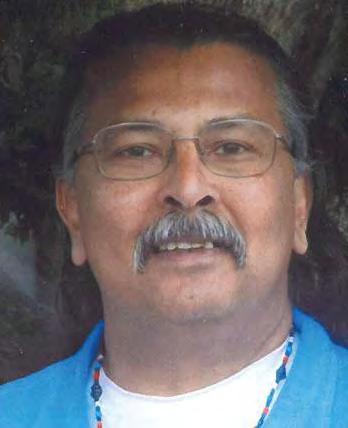
Prasad has broad support for a pardon. Most recently, the San Francisco Democratic Party passed a resolution urging Newsom to pardon Prasad. That was preceded by similar resolutions from the San Francisco Board of Supervisors and the Stanislaus County Democratic Party.
Walsh
Cornelius Washington • Sura Wood
Max Leger PRODUCTION/DESIGN
Ernesto Sopprani
PHOTOGRAPHERS
Jane
Jose Guzman-Colon
Christine Smith
VICE


Scott Wazlowski – 415.829.8937
NATIONAL ADVERTISING REPRESENTATIVE
One of the reasons Prasad has garnered such wide support is because he has turned his life around, even as he remains in custody. He came out as queer while in ICE detention, he wrote in a guest opinion piece for the Bay Area Reporter in July. He has also helped his fellow detainees.

“I have stood up for my fellow detainees by speaking out about work conditions and safety with CalOSHA, the state’s occupational health and safety agency,” Prasad wrote. “I have fought to protect the rights of people detained by ICE during the COVID-19 pandemic, by advocat ing for vaccinations for people who are detained by ICE and fighting for an end to transfers of people who served their time in Cali fornia prisons, to ICE detention.” In fact, his own mother died of COVID while he was in deten
tion and ICE denied him the opportunity to be released – even temporarily – to attend her fu neral.
While he was in state prison, he found treat ment for his drug and alcohol addiction through Alcoholics Anonymous and Narcotics Anonymous. He started therapy. All of this progress is at risk of becoming undone should he be deported. He’s also afraid he would not survive the homophobia in Fiji.
“Deportation would force me into a conservative society where queer ness is not accepted and LGBTQ+ people are persecuted and harmed, and to a country where the police have been known to torture civilians,” Prasad wrote.
Gay former state Assemblymember Tom Am miano (D-San Francisco), who also served as a San Francisco supervisor, is one of those advo
Born and becoming
by Dianna Anderson
[Growing up], I didn’t feel connected to womanhood any more than I felt con nected to the car my mom drove to ferry me to and from school while I played my genuinely terrible mix CDs for her. Putting on clothing typically perceived as womanly was restric tive and frustrating for me. My mom had to explain to me what panty lines are and how to make sure my clothing wasn’t see-through. At one point, she hauled me out of the car in front of my cousins to tell me to go put on a bra because she could tell I wasn’t wearing one under my tee shirt. But such strictures felt false and imposed from the outside world rather than something that felt innate to me.
Looking back on my experiences of “wom anhood,” I can’t help but wonder if I am simply trying to flee it. Being a “woman” does mean a lot of restraints are cast upon me in my per ceived behavior – the fact that I’m supposed to wear makeup to work, that “professional dress” for women often means knowing exactly how to accessorize (I do not) and being a woman means holding back in a meeting because your inter ruption is perceived as rude and brazen while the male coworker next to you is just “having a con versation.” In some way, I’ve spent much of my adult life trying to expand my own conception of “woman” in ways I knew would strike at the barriers set up for so many of us. In abandoning womanhood to become something other, was I simply seeking the safer shores of male privilege?
The notion of “fleeing” one’s gender appears to be an amalgamation of anti-trans talking points and confusion about what it means to be non-binary or trans. Professor Jack Halberstam (then publishing as Judith) argues that there is a home in the in-between, in the borderlands be tween genders, writing, “Transgender discourse in no way necessarily argues that people should just pick up new genders and eliminate old ones or proliferate genders at will simply because gen dering is available as a self-determining practice.
Rather, transgender discourse asks only that we recognize non-normative genders already in circulation and at present under construction.”
Halberstam, in other words, is arguing that tran sition does not mean a flight from womanhood
or manhood, nor an eliminationist approach that destroys gender altogether, but rather a rec ognition of and discussion about what “woman hood” and “manhood” mean. Each trans man or trans woman is making a deliberative statement in their own way about what womanhood or manhood looks like.
It’s us pesky non-binaries who are the problem. Going back to Abigail Shrier, the author who wrote an en tire book arguing that teenage trans men are simply “fleeing” woman hood, escaping into something perceived as “easier,” non-binary and genderfluid identities right fully confuse: “What bothers Chandler – and the reason [they] started a course of testosterone –was that everyone ‘read’ [them] consistently as a girl. [They] want to get to ‘a more in-between feeling’– of being identified as a woman only some of the time. ‘They/them’ are the pronouns [they] claim – but sexless epicene is how [they] want to be seen. Very often non-binary teens seem to resist playing your game or speaking your language. They want to topple the board, send the pieces flying, rewrite all the rules, elimi nate rules altogether. They don’t want to ‘pass,’ and they don’t want your categories. They are
cating for a pardon for Prasad. “As a member of the queer community, the story of Salesh Prasad resonates with me deeply,” Ammiano wrote in a letter to the B.A.R. after the San Francisco Demo cratic Party passed its resolution.
Ammiano pointed out that Prasad earned his release from prison through a rigorous pro cess. “Like any other Californian, he should have been able to reunite with his loved ones, rebuild his life, and become a contributing member of our community,” he wrote. “But instead, he was subject to a cruel double punishment, and trans ferred to ICE detention.”
Newsom has issued many pardons during his tenure. In 2020, he posthumously pardoned gay Black civil rights activist Bayard Rustin, whose 1953 arrest in Pasadena, California on vagrancy charges led to jail time and inclusion on the sex offender registry. Earlier this year, he pardoned Sara Kruzan, who was 16 when she killed George Gilbert Howard in a Riverside motel room. She was 17 when she was sentenced to die in prison for the 1994 murder of the man she said had sexu ally abused her and trafficked her for sex starting when she was 13 years old, the Associated Press reported. And two weeks ago, Newsom posthu mously pardoned Laura Miner, who provided reproductive health services in California from 1934-1948 and was convicted and sentenced to four years in prison for the felony crimes of abor tion and conspiracy to commit abortion, accord ing to a release from the governor’s office. That action came right before the November 8 elec tion, where Californians overwhelmingly voted in favor of Proposition 1, which will enshrine the right to abortion in the state constitution. Newsom also convincingly won a second term in that election, meaning he has some political capital. He should use some of it to right some of these wrongs that are inflicted upon people in ICE custody.
In the Prasad case, Newsom has a chance to stand up to ICE and its strong-arm tactic. In stead of being transferred to ICE custody, Prasad should have been released on parole for which he was found eligible.t
‘genderfluid’ – and reserve the right to change their minds.” The existence of someone who would choose to feel home in the in-between, to be deliberately perceived not as one or the other but both and nothing at the same time, is wildly confusing to Abigail.

These young people are, in her mind, fleeing womanhood but also in many ways embracing it by refusing to “complete” a transition. Even trans men who identify as men who flout gender norms, such as the YouTuber Chase Ross, are too much for her: “While he could pass as a man if he wanted to, he seems to have something else in mind. His earrings, cat tattoos, flop of hair dyed every vivid shade of parrot, and nail polish all slyly nod toward the sex of his birth. Keeping others off balance seems part of the fun and very much the point.” In her attempt at bigotry, in ar guing that Ross does not actually pass because he engages in traditionally feminine activities while presenting as a man, Shrier accidentally lands at the very point of it.
For many years, being trans has largely meant disappearance – whether by violence or altera tion of the body to pass and go stealth. But as the queer community becomes much more visible than before, becoming coherent legal subjects, we are refusing to disappear and refusing to be disappeared. Instead, we exist delib erately in the middle of everything, finding a home in what we are not: we are not women; we are not men. We are in between. We are fluid. We are in the borderlands. Though I was taught and trained in wom anhood, I can now discard what no longer fits, like donating old clothing to a thrift store and find ing something new that suits me much better. I have eliminated my periods with medical intervention, stopped wearing makeup and dresses, and developed a sense of myself that is more at home to me as non-binary than wom anhood ever was. I am in transit. t
This excerpt is reprinted with permission from “In Transit: Being Non-Binary in a World of Dichotomies,” by Dianna Anderson, copyright © 2022 Broadleaf Books. For more information, go to https://amzn.to/3EuEez0
4 • Bay area reporter • November 17-23, 2022 t
<< Open Forum
Volume 52, Number 46 November
2022 www.ebar.com
17-23,
PUBLISHER
ARTS &
NIGHTLIFE EDITOR
EDITORS
Jim Provenzano ASSISTANT
•
WRITERS
Amador • Christopher J. Beale Brian Bromberger • Victoria A. Brownworth • Philip Campbell • Heather Cassell • Adam Echelman • John Ferrannini • Michael Flanagan • Jim Gladstone • Liz Highleyman • Brandon Judell • Lisa Keen • Matthew Kennedy • Philip Mayard • Laura Moreno • David-Elijah Nahmod Paul Parish • Tim Pfaff • Jim Piechota • Adam Sandel • Jason Serinus • Gregg Shapiro • Gwendolyn Smith • Charlie Wagner • Ed
Matthew S. Bajko
Eric Burkett CONTRIBUTING
Tavo
ART DIRECTION
Philomen Cleland • FBFE
Rick Gerharter • Gareth Gooch
• Rudy K. Lawidjaja
Georg Lester • Rich Stadtmiller • Christopher Robledo • Fred Rowe Steven Underhill • Bill Wilson
ILLUSTRATORS & CARTOONISTS
PRESIDENT OF ADVERTISING
Rivendell Media – 212.242.6863 LEGAL COUNSEL Paul H. Melbostad, Esq. Bay area reporter 44 Gough Street, Suite 302 San Francisco, CA 94103 415.861.5019 • www.ebar.com A division of BAR Media, Inc. © 2022 President: Michael M. Yamashita Director: Scott Wazlowski News Editor • news@ebar.com Arts Editor • arts@ebar.com Out & About listings • jim@ebar.com Advertising • scott@ebar.com Letters • letters@ebar.com
Published weekly. Bay Area Reporter reserves the right to edit or reject any advertisement which the publisher believes is in poor taste or which advertises illegal items which might result in legal action against Bay Area Reporter. Ads will not be rejected solely on the basis of politics, philosophy, religion, race, age, or sexual orientation. Advertising rates available upon request. Our list of subscribers and advertisers is confidential and is not sold. The sexual orientation of advertis ers, photographers, and writers published herein is neither inferred nor implied. We are not responsible for unsolicited manuscripts or artwork.
Dianna Anderson
Courtesy Dianna Anderson
Advocates are pushing Governor Gavin Newsom to pardon Salesh Prasad, above, who is in Immigration and Customs Enforcement custody.
Courtesy Salesh Prasad
Out candidates trail in marquee Bay Area races
by Matthew S. Bajko
Around the Bay Area LGBTQ can didates in a number of marquee November 8 general election races continue to fall short in their bids. Two out South Bay candidates and two in the East Bay, however, are set to join their city councils, with a fourth holding on to a lead in their race.


Meanwhile, straight female mayoral candidates in Oakland and San Jose who had considerable LGBTQ support remain locked in second place. Yet, with thousands of more ballots still to be tallied, neither race had been called as of Wednesday afternoon by the Bay Area Reporter’s print deadline.
Rebecca Kaplan, the butch lesbian Oakland City Councilmember hop ing to become the first out member of the Alameda County Board of Super visors, remained in second place after Tuesday’s vote count update. Former Alameda city councilmember Lena Tam leads in their contest for the Dis trict 3 seat with 53.62% of the vote, according to the unofficial returns.
Reelected two years ago to a four-year term, Kaplan will remain on her city’s council if she loses her supervisorial bid. She is leading the charge to bring a Women’s National Basketball Associa tion team to Oakland and will take part in a virtual rally at noon Friday to drum up public support for the effort.
“Oakland is ideally suited for a WNBA team because of our fervent and rooted fanbase, existing arena space, and shared core values with the WNBA,” Kaplan wrote Tuesday in an emailed invite to the rally, which peo ple can register for at www.wnbaoak land.com/rally.
As the B.A.R. reported online last Wednesday, gay Dublin City Coun cilmember Shawn Kumagai con ceded his East Bay race for the open 20th Assembly District seat on No vember 9. He lost to labor leader Liz Ortega, who is straight and received 59% of the vote. She had received the endorsement of outgoing Assembly member Bill Quirk (D-Hayward), who opted not to seek reelection.
Kumagai will soon depart from his city council seat, as he was elected four years ago as the first out LGBTQ councilperson in the Tri-Valley area of the East Bay. Instead of seeking reelec tion this fall, he opted to run for the legislative seat.
“I’m proud of the campaign we ran and the critical issues we brought to the center of the conversation – the impor tance of public safety, fiscal responsibil ity with hard-earned taxpayer dollars, and making housing more affordable and attainable,” stated Kumagai. “I want to congratulate Liz Ortega on her victory and I look forward to helping her address these issues that impact our community and state.”
Celina Reynes, a bisexual thirdgeneration resident of San Leandro, continues to be in first place in her race for the District 1 city council seat. As of Tuesday, Reynes was ahead by 681 votes.
“It’s unclear how many votes are left to count, but the Registrar is updating every day at around 5:00 PM,” tweeted Reynes. “Hopefully we can make an announcement later this week!”
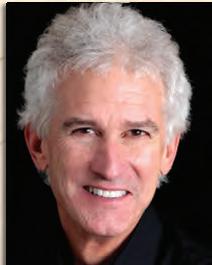
In Cupertino, attorney J.R. Fruen a gay man mounting his second coun cil bid after losing in 2020, has fallen from second to third place among the eight candidates running for three citywide council seats. He is now at 16% of the vote, and if his lead holds over the fourth place finisher, Fruen will be the first LGBTQ person to serve on the Cupertino City Council.
Noting there were still more votes to count, Fruen had tweeted November 11 that “it looks like we’ve prevailed, despite the endless stream of smears and money thrown against us.”
While Fruen awaits a final vote
count, with the next update set for Wednesday by 5 p.m., two other Sili con Valley city council races with out candidates have been decided. Omar Torres, a gay community college board member, won election to the District 3 council seat in San Jose, and Richard Mehlinger, a bisexual and queer resi dent of Sunnyvale, was elected to his city’s District 5 council seat.


Close mayoral races
In three of the Bay Area’s larg est cities, the races to lead them as mayor are all razor close. Gay Santa Clara City Councilmember Anthony Becker appears to have fallen short, once again, in his bid to become the first LGBTQ person elected mayor of a large city in the nine-county region.
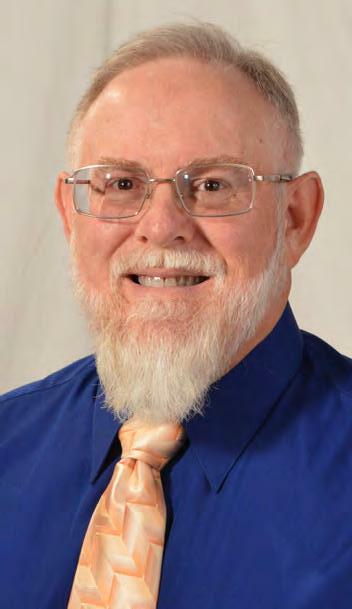
As of Tuesday night he was trailing in his effort to oust from office Mayor Lisa Gillmor by 696 votes. According to the latest results, Becker remains in second place with 48.74% of the vote compared to Gillmor’s 51.26%. He lost to Gill mor in 2018 and won election to his District 6 council seat two years later.
Adding to his agony as he awaited additional ballots to be counted was Becker’s contract ing the flu over the weekend. As he dis closed in a November 13 post on his Facebook campaign account, he ended up running a fever for several days and being bedridden.
“This will for sure be a bad flu sea son. Following the election, getting flu was a sign of how overworked I have been as well as how exhausted I have been,” Becker wrote, adding that he remained hopeful of pulling off a victory. “Thank you everyone for your support, we have made a lot of progress in this election and there was clearly no mandate for either side.”
Their contest largely centered on the ramifications of the city luring the San Francisco 49ers to Santa Clara a decade ago. Becker lambasted Gill mor’s support of the stadium deal and her antagonistic relationship with the football team ever since.
She painted Becker as in the pocket of owner Jed York due to the millions of dollars the team spent in support of Becker’s candidacy. It is an accusation decried as inaccurate by Becker, who argued new leadership at City Hall is needed that can negotiate with the 49ers for terms on the stadium more beneficial to Santa Clara taxpayers.
His term on the council runs through 2024, and with the reelection of his two council allies – Council members Karen Hardy and Raj Cha hal – it appears the pitched battles between the two council factions are here to stay for the next few years.
Next door in San Jose in a race that pitted two straight allies against each
other, City Councilmember Matt Ma han has the edge in his bid to become mayor of the Bay Area’s largest city. He is leading with 51.32% of the vote against Santa Clara County Supervi sor Cindy Chavez, who trailed with 48.68% as of Tuesday. On Wednesday, Chavez conceded.
“I have called Matt Mahan to wish him the best of luck in his two-year term as mayor,” Chavez stated. “San Jose faces numerous challenges in the months and years ahead, requiring that we all work collaboratively with the en tire City Council to reach meaningful and equitable solutions.”
Mahan had the backing of termed out Mayor Sam Liccardo and the San Jose Mercury News. Chavez, a former San Jose councilmember, had support from many LGBTQ South Bay leaders.
In the Oakland mayor’s race, Dis trict 6 City Councilmember Loren Taylor appears set to succeed termed out Mayor Libby Schaaf
He continued to be in first place Tuesday eve ning with 51.4% of the vote, though with sev eral hundred thousand ballots in Alameda County still to count, Taylor has yet to declare victory.
“Our lead in this race remains strong, and we’re confident in our position,” he tweeted Monday night. “We want to extend our thanks to the dedicated election workers who spent the week end to ensure that a safe and fair elec tion was conducted.”
Mayoral candidate District 4 City Councilmember Sheng Thao, a for mer aide to Kaplan, remains in second place with 48.60% of the vote. In a November 15 tweet she noted, “While today’s election update is encourag ing, there are still tens of thousands of ballots left to count. I look forward to see the updates in the coming days and am grateful for the hard work of our Alameda County Registrar of Voters employees.”
Thao will be departing from the council and will be succeeded by queer social justice attorney Janani Ramachandran, who easily defeated queer sex shop owner Nenna Joiner with 67% of the vote in their Novem ber 8 contest.
Planning Ahead is Simple
Planning Ahead is Simple
The benefits are immense.
Planning Ahead is Simple
The benefits are immense.

The benefits are immense.
When you plan your life celebration and lasting remembrance in advance, you can design every detail of your own unique memorial and provide your loved ones with true peace of mind. Planning ahead protects your loved ones from unnecessary stress and financial burden, allowing them to focus on what will matter most at that time—you.
When you plan your life celebration and lasting remembrance in advance, you can design every detail of your own unique memorial and provide your loved ones with true peace of mind. Planning ahead protects your loved ones from unnecessary stress and financial burden, allowing them to focus on what will matter most at that time—you.
“I will now be the youngest Coun cilmember to ever be elected in Oak land’s history – at age 30,” Ramachan dran noted in a congratulatory email sent November 10 to her supporters. “I am also the city’s first South Asian Councilmember, and the first LG BTQ woman of color to be elected to our City Council as well!”
In the race to succeed Taylor on the council, Kevin Jenkins easily defeated tax preparer Nancy Sidebotham, a lesbian making her seventh bid to be elected to a council seat, with nearly 70% of the vote. t

When you plan your life celebration and lasting remembrance in advance, you can design every detail of your own unique memorial and provide your loved ones with true peace of mind. Planning ahead protects your loved ones from unnecessary stress and financial burden, allowing them to focus on what will matter most at that time—you.
Contact us today about the beautiful ways to create a lasting legacy at the San Francisco Columbarium.
Contact us today about the beautiful ways to create a lasting legacy at the San Francisco Columbarium.
Contact us today about the beautiful ways to create a lasting legacy at the San Francisco Columbarium.
Proudly serving our Community.

SanFranciscoColumbarium.com
Proudly serving the LGBT Community.
Proudly serving the LGBT Community. FD 1306
November 17-23, 2022 • Bay area reporter • 5 t Politics >>
/ COA 660 One Loraine Ct. | San Francisco | 415-771-0717
FD 1306 / COA 660 One Loraine Ct. | San Francisco | 415-771-0717
Schneider Attorney at Law • Divorce w/emphasis on Real Estate & Business Divisions • Domestic Partnerships, Support & Custody • Probate and Wills www.SchneiderLawSF.com 415-781-6500 *Certified by the California State Bar family law specialist* 400 Montgomery Street, Ste. 505, San Francisco, CA Paul D. Cain, REALTOR pauldcain2@gmail.com www.atyourservicelimited.com (760) 275.2974 DRE 02130742 Looking to buy in Palm Springs? Call Me! Platinum_Star_Properties.indd 1 9/26/22 11:41 AM Did You Overspend During the Holidays? All loans subject to approval. Rates, by NCUA. Debt Consolidation Loan all your outstanding bills are combined ONE single monthly payment which helps you to lower your monthly expenses! For more information or to apply, stop by branch, call SanFranciscoFCU.com/no-more-debt Did You Overspend During the Holidays? All loans subject to approval. Rates, terms and conditions may vary based on qualifications. Financially insured With Debt Consolidation Loan all your outstanding bills are combined into ONE single monthly payment which helps you to lower your monthly expenses! For more information or to apply, stop by branch, call 415-775-5377 or visit SanFranciscoFCU.com/no-more-debt SFFCU Holiday Overspend BAR Strip Ad 9.75x2.25 v01.indd Yankee Clipper Travel 4115 19th Street San Francisco, CA 94114 415.356.2260 kirk@yankeeclippertravel.com 4115 19th Street, San Francisco 94114 415-356-2260 • kirk@yankeeclippertravel.com Specialists in Tahiti & Hawaii No service fees on travel packages.
SanFranciscoColumbarium.com Barry
Alameda County supervisor candidate Rebecca Kaplan, left, state Assembly candidate Shawn Kumagai, and Santa Clara mayoral candidate Anthony Becker have come up short in their respective races.
Courtesy the candidates
by Gwendolyn Ann Smith
glimmer of hope
cuse to target transgender people.





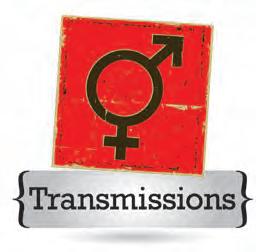


I
t wasn’t intentional for the Transgender Day of Remem brance to fall so close to Election Day and its aftermath, but they have certainly grown in impor tance to each other over the years.
The memorial, formally recog nized on November 20, will fall between the November 8 election and a critical December 6 Georgia runoff between Republican Sen ate candidate Herschel Walker and incumbent Democratic Senator Reverend Raphael Warnock, a race that if Warnock wins will further cement Democratic control of the United States Senate after a re markable turn of events last week that will see the chamber leader ship remain with the Democrats following vote counts released since the election.
Let’s back up for a moment.

As I have mentioned many times before, anti-transgender animus has become the norm on the American right. Former Presi dent Donald Trump waged an on slaught against transgender rights, rolling back programs and policies enacted during President Barack Obama’s administration, while expanding anti-trans discrimina tion in the military and elsewhere. (President Joe Biden reversed the trans military ban after taking of fice in early 2021.)
Meanwhile, statehouses across the country, particularly in the wake of Trump’s reelection 2020 loss, have ramped up anti-trans gender bills, each trying to draft the cruelest way to strip the rights of transgender people and those who care for us.
The latest moves in that regard are anti-drag bills that have been written so broadly that they could
imperil Pride events as well as the day-to-day lives of transgender people – but I digress.
Everything went to another lev el in the 2022 midterms as trans gender rights became a key part of the right’s campaign.

Drag queen story times domi nated the news, with protests and violence marking these events across the country, including the Bay Area, (https://www.ebar.com/ story.php?316416) spurred on by heated rhetoric from Repub lican politicians eager for a cul ture war front they could control, even as they saw the conservativedominated U.S. Supreme Court overturn the right to an abortion,
which turned against the GOP in some pivotal races.
These same candidates spoke of “parents’ rights,” claiming that teachers and doctors were go ing to somehow cause children to magically become transgender, all the while seeking to take away the rights of parents who did want to see their transgender children survive in an increasingly hostile country.
All of this rhetoric, however, has had an effect on transgender lives. Those of us who are transgender have tried to stay mentally well while hearing frequent and more horrible attacks on us dominate the news cycle. We’ve had to worry about where we will go for our medications, even as children’s hospitals were closing gender cen ters over bomb threats spurred on by online anti-trans campaigns, and clinics elsewhere were shut tered over legal challenges in deep red states like Florida and Texas.
But the biggest issue over the last few years has been how anti-trans gender rhetoric helps fuel anti-trans violence. Indeed, much of what has been said by the right has only helped give its followers a good ex
We have been equated with the worst of society, branded as “groomers” as if we have a devi ant sexual purpose in caring for our transgender siblings. This language has emboldened those who might already be dangerous, giving them a way to feel heroic as they target us. I note that when the Buffalo, New York, grocery store killings happened in May, the al leged shooter had a manifesto and in it were pages dedicated to an tisemitic and anti-trans conspira cies that are not dissimilar from the mainstream rantings of con gressmembers such as Marjorie Taylor Greene (R-Georgia).
In the last few years, we have seen an increase in anti-transgen der violence. Initially, it wasn’t more than a trickle, enough to make one consider it to just be an example of better reporting on such cases, rather than a real in crease.
But as the country moved through the Trump presidency, and into the often-unhinged postTrump era, we have seen the numbers grow.
Last year was the deadliest year for trans gender people in the United States, just as the year before was, and just as the year before that was. So far this year, we have seen at least 32 anti-transgen der killings in the United States, ac cording to a new report released November 16 by the Human Rights Campaign, the nation’s largest LGBTQ rights organiza tion. It has been tracking antitrans and gender-nonconforming violence for 10 years.
Yet, in the space of all of this hatred, all of this anger toward transgender people, and all of this violence, I want to offer a moment of hope.

Conservatives, lacking solutions to issues they themselves have helped cause, went all in on cul ture war issues, and transgender rights were the reddest meat they could find – the right went all-in on anti-transgender animus this election season.

Our rights were under challenge by candidates every single day. Ads were run in swing states across the country by Stephen Miller’s Amer ica First Legal and others, (https:// www.hrc.org/press-releases/ breaking-in-final-weeks-of-elec tion-extremist-candidates-antilgbtq-orgs-funnel-tens-of-mil lions-of-dollars-in-ads-attackingtrans-youth-targeting-black-andspanish-speaking-voters) painting us as a great evil that needed to be purged, while numerous can didates spoke out against trans rights in stump speeches.

Republicans, already favored going into the election, saw us as their meal ticket.

They were wrong.
Republicans were unable to re take the Senate, and they stand poised to either fail to regain the House of Representatives, or win it by the narrowest of margins. There was no red wave. Likewise, many governor races and other state-level runs trended Demo cratic, as the fight to preserve abortion rights and voting – and push back against Trump-era elec tion shenanigans – dom inated the ballot box.
Transgender rights were not the winning ticket Republicans had hoped for, and while the battle is far from over, this election showed that their lies do not have the strength they thought they did.
Maybe, just maybe, we will see the rhetoric cool down, at long last – and maybe, just may be so will the threats against our lives begin to recede. Maybe this year will not be the deadliest on record.

In the face of all this, I just feel the need to once again note: the number one right transgender people need is simply to exist.
Today, post-election, I feel that right is one step closer to exis tence. t
www.gwen smith.com.
6 • Bay area reporter • November 17-23, 2022 t valenciacyclery.com We’vegotmorebikesinstock&ready toridethananyshopinSF MANYONSALE! Road Mountain Kid’s Hybrid/City 1065&1077Valencia(Btwn21st&22ndSt.)SF SALES 415-550-6600 • REPAIRS 415-550-6601 Mon-Sat10-6,Thur10-7, Sun11-5 Yourone-stopshopforthe wholefamily! VALENCIA CYCLERY VALENCIA CYCLERY VALENCIA CYCLERY Mon-Sat 10-6, Sun 11-5 We’vegotmorebikesinstock&ready toridethananyshopinSF VALENCIA CYCLERY We have San Francisco’s largest selection of kids bikes LAYAWAY NOW! 20% holds it ‘til Christmas Mon-Sat 10-6, Sun 11-5
the election, a
<< Commentary Entertainment commissioner sworn in Stephen Torres, right, San Francisco’s newest enter tainment commissioner, was sworn in by gay Dis trict 8 Supervisor Rafael Mandelman
the
of Supervisors chambers November
a queer man, was unanimously confirmed to the
the board at its October 25 meeting. He fills a seat that
Gwen Smith asks that you sup port your local Transgender Day of Remembrance event. You’ll find her at
After
in
Board
9. Torres,
panel by
represents the interests of entertainment associations or groups. He is a bartender at the historic Twin Peaks Tavern in the LGBTQ Castro district and also serves as an advisory board member of the Castro LGBTQ Cul tural District. His term is until July 1, 2026.
Tom Temprano
Christine Smith
compiled by Cynthia Laird
Communities across the Bay Area will observe the annual Trans gender Day of Remembrance this week. This year will also mark the first time that Governor Gavin Newsom will issue a declaration.
In June, Newsom signed Assembly Bill 1741, authored by gay Assembly member Evan Low (D-Campbell). As the Bay Area Reporter noted (https:// www.ebar.com/story.php?316737) at the time, it adds California to the list of states that annually proclaim November 20 as Transgender Day of Remembrance. The law requires the governor to officially recognize the date each year as a day of special re membrance in the Golden State. The event, started in 1998 by B.A.R. Trans missions columnist Gwen Smith, commemorates those transgender people lost to violence in a given year.
The Human Rights Campaign issued a report November 16 that stated at least 32 trans and gendernonconforming people were killed in 2022. The nationwide LGBTQ rights organization has been tracking vio lence against those communities for 10 years, it stated in a news release.
In addition to Newsom’s expected proclamation, several Bay Area ju risdictions and organizations have events planned.
In San Francisco, there will be an observance Sunday, November 20, from 4:30 to 5:30 p.m. at La Cocina Municipal Market, 101 Hyde Street. The event will also be streamed at www.tdorsf.com. There will be a march from City Hall to the market beginning at 3 p.m., according to a news release.
The march, which starts on the Polk Street side of City Hall, is spon sored by the San Francisco Office of Transgender Initiatives, and will in clude speakers Levi Maxwell, Victoria
Castro, and Anjali Rimi.
The commemoration is being organized by a group of trans and gender-nonconforming folks and LGBTQI organizations from San Francisco, the release stated.
Guest speakers scheduled to appear include Sylvia Guerrero, the mother of Gwen Araujo, a trans teen who was murdered in Newark, California 20 years ago; trans activ ist Janelle Luster; and Cecilia Chung, a trans community leader and member of the San Francisco Health Com mission. The invocation will be by Holy Old Man Bull, and there will be performances by New Voices Bay Area Ensemble and Tory Teasley.
The Rainbow Community Center in Concord will observe TDOR Sunday, November 20, with a remembrance vigil from 6 to 7 p.m. at Todos Santos Park, 2175 Willow Pass Road. The cen ter, which just saw the departure of trans
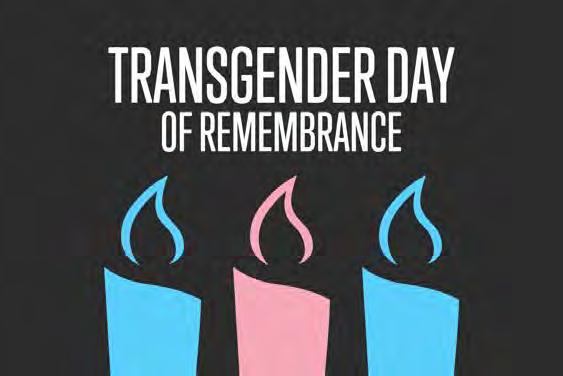
executive director Kiku Johnson, urged people to join in the observance.
“Transgender folks oftentimes face the most barriers within the LGBTQ IA+ community, including transpho bic hate violence, as well as a lack of access and resources,” the center’s board stated in an email announce ment. “Specifically, nationally, Black and Latinx transwomen face the highest rates of violence and hate out of any single demo graphic in our country. These conditions and systemic issues can prevent trans community members from being able to live the full, healthy, and comfortable lives that they deserve.”
To register for the event, which is free, email cristina@ rainbowcc.org.
On the Peninsula, the San Ma teo County LGBTQ Commission will hold its TransACTION Day of Change Friday, November 18, from 3 to 5 p.m. at Courthouse Square, 2200 Broadway in Redwood City.
According to an email announce ment, the event will include booths specifically with trans and gender-di verse resources and services, an Alle giance Wall, reading of names of those lost, and a candlelight vigil.

People can also sign up in advance for COVID and MPX vaccinations at https://myturn.ca.gov/
For more information, go to https://bit.ly/3WYNXVj.
The Billy DeFrank LGBTQ Com munity Center in San Jose will honor TDOR with a special display in the center’s ballroom. The pictures and stories will be unveiled November 20 and remain up through the end of the year for people to access. The center is located at 938 The Alameda.
The California Democratic Party and its LGBTQ Caucus will observe TDOR Saturday, November 19, from noon to 1 p.m. with a special virtual public program featuring Smith, the TDOR founder.
“With so many seeking to erase transgender people – sometimes in the most brutal ways possible – it is vitally important that those we lose are remembered, and that we con tinue to fight for justice,” Smith stated in an email message from caucus Co-Chairs Lester Aponte and Tiffany Woods, a trans mom who used to or ganize a TDOR event in the East Bay.
To sign up, go to https://bit. ly/3Acm2aA.
SF supes panel advances update to prohibited bias definitions


The San Francisco Board of Super visors rules committee on Monday advanced changes to the city’s admin istrative code that will update defini tions of prohibited discrimination in contracting ordinances.
Sponsored by Mayor London Breed and gay supervisors Rafael Mandelman (District 8) and Matt
Dorsey (District 6), the proposal now heads to the full board. The rules committee, made up of Mandelman, who is vice chair, District 3 Supervisor Aaron Peskin, chair; and District 1 Su pervisor Connie Chan, unanimously approved sending the item forward. There was no public comment.
During their brief discussion on the matter, Jude Diebold, with the San Francisco Human Rights Commis sion, said that they had gathered input from a variety of sources, including the commission’s LGBTQ advisory bodies. Diebold said some definitions contained in Chapters 12B and 12C of the administrative code were outdated. Those chapters deal with contracts, including property contracts, that the city enters into. In addition to revising the definitions of gender identity, sex, and sexual orientation, the term gen der expression will be added.
The definition of age will be revised in Chapter 12A, which is the Human Rights Commission ordinance.
“It will clean up some problematic definitions of age,” HRC staff mem ber Matthew Oglander said.
As an example, Oglander said that in the HRC ordinance that established the commission, age is currently capped at 65 under the code as that was the case in federal and state law at the time. Now, however, state and federal language increased the age cap before removing it altogether, Oglan der said.
Disability, too, will be more broadly defined under the revisions. Oglander said the definition had followed the narrower federal law and would now be updated to the broader state law.
The Mayor’s Office of Disability is supportive of the changes, Peskin noted.
Dorsey told the Bay Area Reporter he was pleased the item, which was first proposed earlier this year, got a hearing.
November 17-23, 2022 • Bay area reporter • 7 t SFMTA.com/ServiceChanges Alert 311 Free language assistance / 免費語言協助 / Ayuda gratis con el idioma / Бесплатная помощь переводчиков / Trợ giúp Thông dịch Miễn phí / Assistance linguistique gratuite / 無料の言語支援 / Libreng tulong para sa wikang Filipino / 무료 언어 지원 / การช่วยเหลือทางด้านภาษาโดยไม่เสียค่าใช้จ่าย / قمرلا لىع نياجلما ةدعاسلما طخ Starting November 19, the new Muni Metro Central Subway will run special weekend service Saturdays and Sundays from 8 a.m. – 12:00 a.m. every 12 minutes. Transfer at Powell Station to access the four new Central Subway stations: Chinatown-Rose Pak, Union Square/Market Street, Yerba Buena/Moscone and 4th & Brannan. Learn about the new stations and Muni Metro connections. Sign up for a tour. New Third service from Chinatown-Rose Pak to Sunnydale starts January 7, 2023. Special Weekend Service CENTRAL SUBWAY New! Bay Area TDOR events announced Community News>>
Transgender Day of Remembrance events will be held around the Bay Area.
See page 10 >>
Courtesy LA County Dept. of Mental Health
with AIDS to help them pay for rent, utilities, and other living expenses. She said that she had been good friends with Daddy’s owner, the late Philip Turner, and that the bar was holding a beer bust that day that would benefit AEF. (Turner died in 2001.)
At that time, bars in the Castro and South of Market neighborhoods of ten held beer benefits for AEF. Neigh borhood businesses and bars also had collection jars for the nonprofit’s widely successful penny campaign, which raised funds from people drop ping their pennies and other spare change in the jars. The program had a popular tagline, “Every penny counts,” and resulted in over $100,000 being raised over the years, Ewing recalled.
Ewing, now 73, served on the AEF board from 1993-1997, and was the first female board president of the organization, which at that time was mostly run by male volunteers from the gay and leather communities. “I was president for two years,” she said, “because half the board died.”
That was generally the case in those years of the AIDS epidemic when an entire generation of gay men was lost to the disease. It was June 5, 1981, when the federal Centers for Disease Control and Prevention’s Morbidity and Mortality Weekly Report noted five cases of pneumocystis pneumo nia among previously healthy gay men in Los Angeles. A second report of PCP and Kaposi sarcoma cases in New York City and California fol lowed a month later. Though it didn’t have a name yet, AIDS engulfed gay male and other communities across the country and around the world.

The disease affected San Francisco like nothing else before. And it wasn’t just in the mostly white LGBTQ Cas tro neighborhood. People of color and poor people, along with women, hemophiliacs, and people who inject drugs, would also be greatly impacted by the epidemic. But many in the les bian community stepped up during those years, from leading nonprofit boards to working in the health care field to organizing blood drives so that women could help men and oth ers who were sick and dying. (Gay men had been banned from donating blood due to the AIDS crisis, and the policy was only recently revised to al low men who have sex with men to give blood if they have not had gay sex in the past three months.)
Today, of course, scientific advanc es have ushered in new antiretroviral medications that can drastically lower the viral load – the amount of HIV in the body – of patients. Undetected = Untransmittable is the phrase used when someone’s viral load is unde tectable and they don’t transmit the virus to sexual partners.
Help for the
his friend, Tom Calvanese, a queer man, turned the hotel into a haven of sorts for those with few options. (Wilson died in 2008.)
“It was a robust program in the Tenderloin for marginally housed sick folks,” Robb recalled, adding that be fore protease inhibitors, it was mostly hospice care.
In an email, Calvanese, 62, wrote that he was manager at the Ambassa dor. He described what led to Wilson leasing the hotel.
“I think it’s important to realize that the Ambassador Hotel was a hav en for queer, transgender, gay, lesbian, bi, and alternative low-income folks before AIDS came along,” he stated.
“So, when HIV/AIDS hit, it hit the Ambassador Hotel hard.
“I recall there being about 15 people living with HIV/AIDS when I started as hotel manager in 1989,” Calvanese added. “Within two years. There were 150, and more arrived continuously. The need was overwhelming and the Ambassador Hotel became the hous ing of ‘last resort’ for many who had nowhere else to go.”
Calvanese described the effect that lesbian nurses and other profession als during that time as being “beyond measure.”
“Many of those we cared for there were without family and support systems,” he noted. “More often than not, it was fierce lesbians like Val who came on the scene, rolled up their sleeves, and got to work. … More im portantly, they came back, day after day, week after week, year after year. Their commitment and their pres ence made it all possible.”
Today, the Ambassador is operated by the Tenderloin Neighborhood De velopment Corporation and serves people with extremely low incomes.
Robb said that she and other nurses and social workers developed a clini cal program to help people manage pain and their dying process, as well as leveraged services in the hope that similar programs could be created at other locations. The nursing and social work staff had a room there in which they kept supplies, and Robb said that despite some fear of ho mophobia on the part of straight cli ents, that didn’t materialize.
“When I took care of gay men there were high, high levels of appreciation,” she said. “In the Tenderloin, especially as a lesbian, I was nervous at first be cause there were a lot of straight men, but I found an incredible amount of acceptance and diversity, to my sur prise.”
Robb said that she wanted to give a shout-out to lesbian social workers, who often earned less than nurses and worked side by side with them.
Rallying around gay brothers
Knutzen, 66, is retired and cur rently serves as president of the San Francisco Disability and Aging Ser vices Commission. She emphasized that she was speaking for herself and not the panel.
The AIDS epidemic started to turn with the availability of protease inhib itors in the late 1990s. Today, there are many more medications, including PrEP, which when used as prescribed is very effective at preventing HIV. But as has been reported in the B.A.R., disparities remain in accessing PrEP, particularly in communities of color.
Knutzen pointed to the late Pat Norman, an African American wom an who was the first gay or lesbian employee at the San Francisco De partment of Public Health. At DPH, she worked in the Office of Special Problems. During the HIV/AIDS epi demic, Norman was the coordinator for gay and lesbian services at DPH.
“It was important to have that,” Knutzen said of Norman’s presence at DPH. “She did a lot of good by be ing there at that time.” Norman died in August.
Ewing, who had been involved with old LGBTQ activist groups such as Queer and Present Danger, an affinity group of the AIDS Coalition to Un leash Power, or ACT UP, was reflective of her work with AEF. “You knew you were doing the right thing,” she said. “It was all hands on deck.”
It didn’t start out easy. In 1996, dur ing Ewing’s stint as AEF board presi dent, the late B.A.R. leather columnist Mister Marcus (aka Marcus Hernan dez) was critical of her because she did not attend an event at the Eagle, a leather bar. Letters to the editor came in from readers who demanded Mar cus apologize. (Hernandez, whom Ewing said never did apologize to her, died in 2009.)
connected. That’s how I remember it. Women, lesbians, feminists, that was my friendship group and we just stepped in and started helping.”
She noted that the Harvey Milk and Alice B. Toklas LGBTQ Democratic clubs, both of which she’s been in volved with over the years, were doing AIDS work, or had an AIDS caucus, as did faith communities like Con gregation Sha’ar Zahav, the LGBTQ synagogue near the Castro.
“What we were doing in the AIDS caucus – so much of the Democratic [Party] structure blended in with Queer Nation,” Knutzen said, refer ring to the activist group.
Knutzen came to San Francisco in 1981, three years after the assassina tion of gay supervisor Harvey Milk and then-mayor George Moscone by disgruntled ex-supervisor Dan White.
“After he was killed we all under stood the political power we had to keep,” Knutzen said, referring to Milk’s death. “Having political power saved our lives and changed health care. It really matters for people to get involved and vote.”
Gay activist Cleve Jones, a cofounder of the NAMES Project AIDS Memorial Quilt who has lived with HIV for many years, said that while people may focus on lesbian separat ists, he thought it was a small group.
He, too, praised lesbian nurses. “Lots of doctors had a lesbian on staff,” he recalled in a phone interview. (The quilt is now under the stewardship of the National AIDS Memorial Grove in San Francisco.)
Jones, who also co-founded the San Francisco AIDS Foundation, said that at one of the Castro bars he frequented, The Village (later Uncle Bert’s and now The Mix), men and women socialized together. And some lesbians had gay men who shared housing with them.
care of their roommates,” he said.
Jones, 68, had nothing but praise for the lesbians who became active during those early AIDS years.
“Most organizations were domi nated by men and as the men got sick and died, a whole new generation of leadership emerged with lesbian and straight women in AIDS organiza tions and the political world,” he said.
Quite a few, like Ewing and her late partner, Rebecca Le Pere, who died in 2002, got involved in the AIDS quilt, he said. Le Pere served as man aging director for the quilt when it was housed in San Francisco under the NAMES Project. (The quilt later moved to Atlanta and, in 2019, the NAMES Project dissolved and the AIDS grove became its steward. The panels are now housed in a ware house near the Oakland International Airport when not out on loan or oth erwise displayed.)

Le Pere’s death from breast can cer helped inspire AEF to create a separate Breast Cancer Emergency Fund that is still in operation as the Breast and Ovarian Cancer Emer gency Fund under the auspices of Bay Area Cancer Connections, ac cording to the website.
AEF merged with Positive Re source Center, or PRC, and is now known as Emergency Financial As sistance. (https://prcsf.org/emer gency-financial-assistance/)
“I’m guessing that through the span of the entire years we lost 20,000 to 25,000 gay men in San Francisco,” said Jones. “Women stepped up in leadership, as vol unteers, with meal deliveries. For men in my generation, it still of ten comes up in conversation and how important it was to support women.”
Tenderloin
While San Francisco’s Castro was hard hit by AIDS, so was the Tender loin and the city’s South of Market neighborhood. Then, as it is now, some of the city’s most vulnerable residents call the areas home.
Val Robb, a lesbian, is a retired HIV nurse whose work included stints with Visiting Nurses and at Zucker berg San Francisco General Hospital and Trauma Center’s Ward 86. The outpatient HIV/AIDS clinic opened there in 1983, when SFGH became the first hospital in the country to start such a program. In the late 1980s Robb started working with HIVpositive drug users in the Tenderloin. It was “right before the harm reduc tion movement took off,” she said in a phone interview. “In the early 1990s I was doing a lot of training nation ally because people didn’t know what to do with drug users who were really sick.”
Robb, 67, also was one of the first nurses to take on providing services at the Ambassador Hotel, a single-room-occupancy facility in the Tenderloin that was leased by a gay man, Hank Wilson. He and
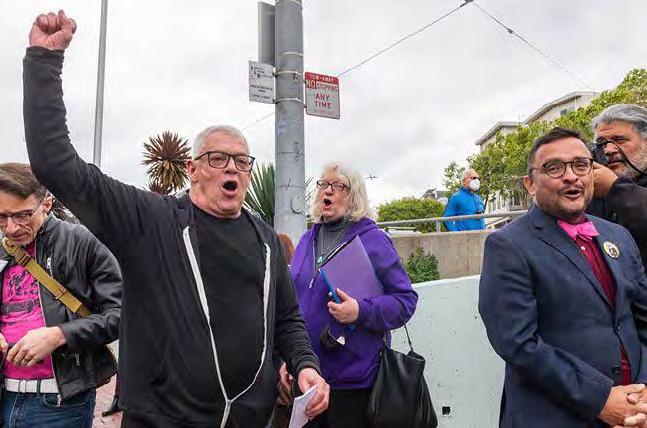
During the 1980s and early to mid1990s, many in the lesbian commu nity rallied around their gay brothers, offering support, comfort, and care at a time when many men had been disowned by their families and were dying. Many, like Robb, were nurses. Lesbian nurse Diane Jones retired in 2016 from Ward 86 at SFGH.
In an email, Jones wrote that she began her nursing career on Ward 5B, SFGH’s inpatient AIDS unit. She later moved to Ward 86. In a 2016 B.A.R. article on the occasion of her retire ment after working at SFGH for 34 years, Jones didn’t want to talk about those early days, preferring to focus on the importance of removing barri ers to health insurance, increasing ac cess to care, and advocacy for patients. In the email, Jones wrote that she still felt that way and was “reluctant to do these history pieces.”
San Francisco political activist Martha Knutzen said in a phone in terview that it did not surprise her that lesbians in nursing and other health professions rose to the chal lenges presented by AIDS.
“We shared the same experience and stigma and not getting the right kind of care,” Knutzen, a lesbian, said. “From the very beginning people just saw these needs.”
“Mister Marcus has done a dishonor to himself and an extreme disservice to our community by attacking the com mitment of Leslie Ewing, president of the board of the AIDS Emergency Fund,” wrote reader Jessea Greenman in the September 19, 1996 issue. “I sug gest he apologize graciously, sincerely, publicly, and immediately.”
Gay men with AEF and other or ganizations who may have had their doubts grew to support Ewing, who went on to work for Under One Roof, an old San Francisco nonprofit that donated proceeds to HIV/AIDS or ganizations. In 2019, Ewing retired as executive director of the Pacific Cen ter for Human Growth in Berkeley, one of the oldest LGBTQ community centers in the country and the oldest in the Bay Area.
“I wasn’t trying to replace men,” Ewing said of those early days. “I was trying to stop an epidemic. That’s what it was like for me.”
But that didn’t mean that the lesbian community as a whole was on board. Ewing also took some criticism from separatist women, she said. “I do re member getting a fair amount of flak from lesbian separatists for ‘serving’ men rather than ‘lifting’ women – like it was an either-or decision. My response was that we were just trying to stop an epidemic,” Ewing wrote in an email.
Knutzen didn’t see the lesbian separatism issue that way. In her experience, “we were all physically
“Lots of women stepped up to take
8 • Bay area reporter • November 17-23, 2022 t << From the Cover << AIDS crsis From page 1
Cleve Jones, second from left, leads a chant during a March 27 rally at Harvey Milk Plaza in the Castro.
Jane Philomen Cleland
Leslie Ewing was the first female board president of the AIDS Emergency Fund.
Courtesy Leslie Ewing
An old ad from the Bay Area Reporter promoted the upcoming women’s blood drive.
See page 10 >>
Courtesy Lenore Chinn
by Cynthia Laird
Crispin Hollings, a gay man who was a community leader in the LGBTQ Castro neighborhood and worked as the chief financial officer for the San Francisco Sheriff’s Office, died November 10. He was 61.

According to posts on Mr. Hollings’ Facebook page, he apparently suffered a heart attack.
San Francisco Sheriff Paul Miya moto told the Bay Area Reporter that the office is in mourning.
“It feels like this big hole for me, personally,” Miyamoto said in a phone interview. “We fostered a friendship on the job and enjoyed community events together.”
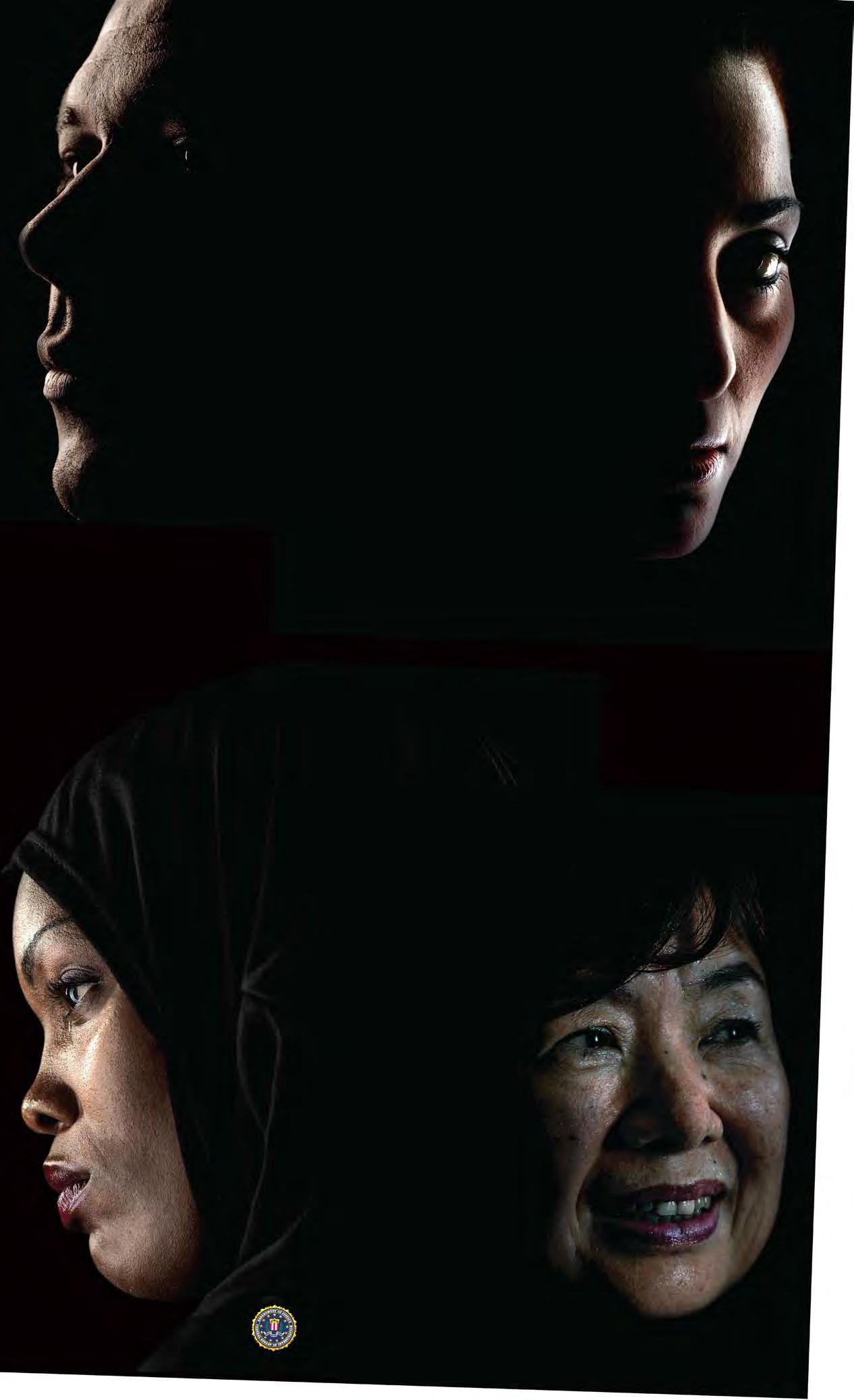
Miyamoto also said that he was “amazed” at Mr. Hollings’ involve ment with Castro groups such as the Castro/Upper Market Community Benefit District and the Castro Coun try Club, a sober space in the LGBTQ neighborhood.
“It’s very clear how much he will be missed by everyone,” the sheriff said.
Mr. Hollings, a Castro resident, served as the treasurer for the Castro/ Upper Market Community Benefit District, said Executive Director An drea Aiello. He was also involved with the Castro Country Club, a sober com munity center in the neighborhood.
Aiello, a lesbian, wrote in an email November 11 that she was “shocked” by Mr. Hollings’ sudden passing. She stated that Mr. Hollings joined the CBD board in October 2018 and be came its treasurer in February 2019.
Reached November 14, Aiello said that she and the CBD board would greatly miss Mr. Hollings.
“He was a valuable board member and someone who shared his opin ion,” she said in a phone interview. “Personally, I will miss his contribu tions to the board.”
As treasurer, Mr. Hollings “really helped us” simplify the CBD’s bud get presentation so that people could more easily understand it, she said.
“He was so committed to public service and transparency,” Aiello add ed. “I got to know him on the board and it came up all the time – his belief in local government control.”
Billy Lemon, a gay man who’s ex ecutive director of the country club, said that Mr. Hollings joined the non profit’s board last year. Prior to that, Mr. Hollings was involved with the club for about a decade, Lemon said in a brief phone interview.
He declined further comment Fri day, saying that he and Mr. Hollings’ friends were still processing the sad news of his passing.
According to the sheriff’s office’s website, Mr. Hollings joined the de partment as CFO in September 2016. He oversaw the office’s financial ser vices, and managed the 12-person finance and payroll team. Mr. Hol lings advised Sheriff Paul Miyamoto and the executive management team members on department financial issues including the sheriff’s office annual operating budget. He also provided timely financial analysis, the website stated.
Sheriff’s office spokesperson Tara Moriarty issued a statement late Fri day afternoon and expressed the de partment’s condolences to Mr. Hol lings’ husband, Luis Hollings Casillas.
“We will miss, you, Crispin,” Mo riarty stated in an email. “The world was certainly a kinder, richer, and more interesting place with you in it. Our Sheriff’s Office family extends its heartfelt condolences to Luis and Crispin’s family for the loss of this bright star.”
She added that Mr. Hollings was a “cherished and valued member of our Sheriff’s Office family. He was a longstanding chief financial officer in the City and County of San Francisco and worked alongside many of us in both in the SFSO and other city depart ments.”
“As an unabashedly staunch ad vocate for the LGBTQ+ community, Crispin mentored many, and elevated others with the breadth of his humor and depth of his insight,” Moriarty add ed. “He fought valiantly for LGBTQ+ rights during a time in history when
Mr. Hollings graduated from the Aircraft Maintenance Division of City College of San Francisco, according to the sheriff’s office’s website. He re paired jet engines for United Airlines in San Francisco and, before that, Airbus Industrie in Toulouse, France. He later earned his MBA from UC Berkeley, switched careers, and joined the San Francisco PUC, the website noted.

“His interest in public service and criminal justice policy led him to join the sheriff’s office, where he has gained a deeper understanding of the multiple groups and issues that com prise San Francisco’s criminal justice system,” the website stated.
Moriarty stated that Mr. Hollings “a was rare find, having worked in ca reers that utilized both his hands and his brain. As a CFO, he was a num bers guy who loved spreadsheets and
the city. If you received a holiday card, elaborately designed by him and his husband Luis, it was truly an honor.”
Gay District 6 Supervisor Matt Dorsey had known Mr. Hollings since 2007. They served together on the board of the municipal executives association and were both involved in the city attorney office’s legal fight for marriage equality.
Last Thursday morning their paths literally crossed as Dorsey waved and yelled out a hello to Mr. Hollings, who was riding his bicycle, while crossing the street at Mission and Eighth streets. His death is “abso lutely a shock,” said Dorsey.
“I am incredibly saddened. What a loss. What a wonderful person,” said Dorsey. “I have known Crispin for years. He was just a decent person.”
In his role on the CBD board, Mr. Hollings spoke out against a proposal
Mr. Hollings was not persuaded. “We don’t have any commitment for long-term costs, so that’s one reason I’d say kill the program here tonight,” Mr. Hollings said at that meeting. “Another thing is ... we are an unelected body that would be imposing a system on this neigh borhood outside what the CBD ought to be doing. There’s a lot of good work that the CBD can do without being distracted by this.”

On Facebook, many of Mr. Hol lings’ friends posted tributes.
“I’ll never forget the day when Crispin burst into the cafe of the Castro Country Club in 2009, when the club was threatened with clo sure, and exclaimed, ‘We can’t let this happen!’” wrote Terry Beswick, a gay man who used to be manager of the club. “From that day for ward, for me he became a mentor,
November 17-23, 2022 • Bay area reporter • 9 t STOP THE HATE! If you have been the victim of a hate crime, please report it. San Francisco District Attorney: Hate Crime Hotline: 628-652-4311 State of California Department of Justice https://oag.ca.gov/hatecrimes The Stop The Hate campaign is made possible with funding from the California State Library (CSL) in partnership with the California Commission on Asian and Pacific Islander American Affairs (CAPIAA). The views expressed in this newspaper and other materials produced by the Bay Area Reporter do not necessarily reflect the official policies of the CSL, CAPIAA or the California government. Learn more capiaa.ca.gov/stop-the-hate. Stop-The-Hate-4x10.indd 1 8/24/22 12:53 PM Castro leader, SF sheriff’s CFO Crispin Hollings dies Obituaries>>
Crispin Hollings
Courtesy SF Sheriff’s Office
As Nieto noted on her Twitter handle, she is “Sheriff Elect of Monterey County in California, serving a population 439,035 and an area covering 3771 square miles.”
“I pray to be a good leader – not to win, but to really do the work for the men and women of the Sheriff’s Office, and help lead us to become the best Sheriff’s Office in the state, if not the nation,” Nieto said at her election night party, as the Monterey County Weekly reported.
Across the country there are currently four out sheriffs listed on a map of LGBTQ electeds maintained by the LGBTQ Victory Fund – lesbians Kristin Graziano in South Carolina’s Charleston County and Charmaine McGuffey in Ohio’s Hamilton County; and gay men Dustin Heuerman in Illinois’ Champaign County and Dave Hutchinson in Minnesota’s Hennepin County. After a controversial first term Hutchinson will depart at the end of the year, while Heuerman was reelected last Tuesday to a second term.
New mayor
Four years ago Williamson became the first known LGBTQ Monterey city councilperson. He was also the first Black council member in the
AIDS crisis
Jones pointed out that some LG BTQ organizations were already moving to a model of having male and female co-leaders during the early years of the epidemic. “It’s still important,” he said.
Knutzen said that the so-called San Francisco Model that relied heavily on partnerships between LGBTQ and HIV/AIDS organiza tions, and agencies like DPH, was “so important.”
“It led to so many reforms in health care,” she said, mentioning organizations like the Shanti Proj ect, which pioneered compassion ate volunteer-driven services, and Pets Are Wonderful Support, which started in order to provide people living with HIV/AIDS resources to help care for their pets. (PAWS is now part of Shanti.)
Lesbians band together for blood drives
Ewing pointed out that in those days, long before email, cellphones, and social media, lesbians didn’t al ways know what others were doing around AIDS work and helping gay and bi men.
One of those other activities was spearheaded by Lenore Chinn, a lesbian who at the time worked in health care at Davies Medical Cen ter in San Francisco and is an artist who now focuses on photography. In the late 1980s, Chinn and other women in the Harvey Milk LGBTQ Democratic Club held an annual blood drive in the Castro. While gay men could not donate blood at the time, many needed blood because of the side effects of AZT, the first medication approved for AIDS, Chinn recalled.
“Many people in the club – guys – died. Many of us were in health care,” Chinn said in a phone inter
city’s history and, at 31 years of age, the youngest.
Rather than seek a second council term, he opted to seek election as mayor of the global tourist destination along California’s Central Coast. Mayor Clyde Roberson, who was born in Oakland, decided not to seek a fifth consecutive term.
Williamson, with 54.72% of the vote, defeated Councilmember Dan Albert Jr., whose father had served as mayor in the 1980s and 1990s. The elder Albert served alongside Roberson, who was a city councilmember for 16 years and supported the younger Albert to succeed him as mayor.
Elected citywide to a two-year term, the mayor works closely with Monterey’s city manager and the other four members of the City Council. Albert conceded the race on November 12 and called Williamson that morning to congratulate him.
“It’s an incredible honor and look forward to getting to work,” Williamson, whose inauguration will be December 6, told the Bay Area Reporter in a texted reply November 13.
Speaking by phone November 15, Williamson told the B.A.R. he has received “a lot of love and support” since being declared the incoming mayor. “A lot of people are super enthusiastic and excited.”
view, referring to the lesbian mem bers of the Milk club.
Called the Women’s Day Blood Drive, it was one day every August at Most Holy Redeemer, the Ro man Catholic Church in the Cas tro. Staff from Irwin Memorial Blood Bank would come and its staff would handle the blood do nations. (Irwin Memorial was later known as Blood Centers of the Pa cific and is now known as Vitalant.)
The women ran ads in the Bay Area Reporter. “Our boys need blood,” one old ad stated. “Lesbi ans, help solve an urgent crisis in our community. Stand with our brothers in fighting the AIDS epi demic.” The effort ran from 1985 to the early 1990s, Chinn recalled.
“Jim Rivaldo was a graphic art ist and he created ads in the B.A.R. and other papers,” Chinn said, referring to the late gay political consultant who died in 2007 after living with AIDS, hepatitis C, and other complications, including liv er cancer. Rivaldo was a founder of the Milk club.
At its height, sometimes over 100 people would show up from all sectors of the community, Chinn recalled. She noted in an old B.A.R. article that 95% of donors were lesbians. She also remembered that the wording on the blood bank’s materials “was poor,” in that people couldn’t donate if they had tattoos unless they were able to verify how they were obtained. “And prosti tutes couldn’t donate,” she recalled of how the materials referred to sex workers. “The terminology has changed,” she said.
Chinn, 73, said in addition to the women’s blood donations bolstering local supplies, they helped patients reduce the cost of a pint of blood via credits they could get through an account that the Milk club had set up. At the time, the men would get $20 off
Newsom accepting applicants for racial equity panel
Raised by a mom serving in the Navy, Williamson lived in different cities across the globe as a child. He first moved to the Monterey area in 2010 for a job with the Naval Postgraduate School and graduated from Cal State Monterey Bay in 2013. He went on to earn a master’s of business administration from the naval school and briefly lived in San Francisco’s LGBTQ Castro district while working on President Barack Obama’s 2012 reelection campaign.
As in the Bay Area, housing is a major issue for the Monterey Peninsula and impacts many of the people who work in the local tourist industry and struggle to afford to live near their jobs. Monterey has seen its new housing requirement from the state go from 650 units to nearly 3,700 units, a target that Williamson is committed to meeting as mayor.
“It has been a healthy debate over the last several months, though the message I’ve been hearing loud and clear from residents is seen in the results of this election – we need to move Monterey forward,” he wrote in a Facebook post last Saturday after declaring victory in the race. “I’m eager to work with the new council on the many issues facing our city, but for now want to thank my friends, family, colleagues, volunteers, and this beautiful community that we live in for supporting my campaign.”
In the nearby city of Carmel-bythe-Sea, gay City Councilmember Jeff Baron easily won a second term with 33.85% of the vote, according to the unofficial returns. The married former Silicon Valley resident was elected four years ago as his city’s first LGBTQ councilperson.
John Uy, a professor at the U.S. military’s Presidio of Monterey, won election to a seat on the City of Del Rey Oaks City Council.
“It will be a true honor and a privilege to serve you and your families as a Del Rel Oaks Councilmember for the next four years,” Uy, who is a gay immigrant, wrote in a Facebook post about his victory.
In Santa Cruz County, transgender Cabrillo Community College Board of Trustees member Adam Spickler can finally claim to be the first transgender man elected to public office in California. Four years ago he was appointed to the college board in lieu of an election, since no one else ran for his Area II seat, making him the first transgender man to hold public office in the Golden State.
This year, Spickler easily vanquished challenger Bob Kittle, the head coach the past 11 years of the college’s baseball team. He received close to 80% of the vote to clinch a second four-year term.
“My opponent was not running a campaign in the same way I was. He
was not spending money and not really doing any campaigning or get out the vote efforts that I could see,” Spickler told the B.A.R. by phone November 14. “He is a well known baseball coach at both the high school and college level. I don’t think he felt he needed to run on more than his reputation.”
Spickler noted that all three incumbents on the college board won reelection last week. It was a sign of voters’ confidence in the district’s leadership, he added, which voted 6-1 Monday night to start a process to change the name of the college from that of a Spanish colonizer.
“I think the voters here in Santa Cruz County looked at the way our college faced difficulties with not only the COVID pandemic but the fires in Santa Cruz County, and how we stepped up. We ended up losing students to both of those horrible crises,” said Spickler, who works for the county human relations department.
In the contest for the District 4 seat on the Santa Cruz County Board of Supervisors, gay candidate Jimmy Dutra fell short. He is in second place with 42% of the vote.
A member of the Watsonville City Council, Dutra lost his first bid for the seat in 2018. The county board has yet to have an out LGBTQ member serve on it. t
der the Trump administration amid a blood shortage caused by the CO VID-19 pandemic, this period was reduced to three months.
Last year, Vitalant announced a study that sought gay and bi men to challenge the FDA ban.
Brian Custer, Ph.D., a gay man who is a vice president of research and scientific programs at Vitalant, said last year that the blood dona tion nonprofit is conducting a study in eight cities that will be presented to the FDA in early 2023. Custer said he hopes the study’s results will guide the federal agency to consider changing questions about men who have sex with men specifically to questions about sexual health and safety across all orientations.
Not just in SF
“The updated language in our mu nicipal code reflects a more enlight ened take on gender identity and sex ual orientation, which I think is more worthy of San Francisco’s inclusive values.” he said. “Language updates that pertain to age and disability sta tus are really about harmonizing local provisions with their state and federal counterparts.”
This fall, Governor Gavin Newsom signed an executive order directing state agencies and departments to take additional actions to embed eq uity analysis and considerations in their mission, policies, and practices. The executive order also established a new Racial Equity Commission in the Governor’s Office of Planning and Research. Newsom is now seeking ap plicants for his seats on the panel.
According to an announcement,
and a pint cost $70, she said. A 1988 B.A.R. article noted that the Women’s Day Blood Drive had “issued over 500 credits to people with AIDS and ARC” (AIDS Re lated Complex).
In 1988 a physician at San Fran cisco General Hospital threatened a “media war” over the blood drive, claiming that tainted blood was be ing collected. An https://archive. org/details/BAR_19880811 article in the B.A.R. at the time stated that Dr. Lorraine Day had taken her claims to media outlets that re ported “gays were giving blood in the Castro.”
That was not the case, but the blood bank relocated the drive to its offices, and Chinn was quoted in the article as stating that blood
the new commission is charged with creating a racial equity framework consisting of resources and tools to promote racial equity and address structural racism. The commission will also recommend tools, method ologies, and opportunities to advance racial equity, and will provide direct assistance to state agencies in review ing and updating policies and prac tices upon agency request.
The commission will be comprised of 11 individuals, with seven appointed by Newsom, two by the Senate Rules
bank officials were “bending over backward to help us.”
“It became a bone of conten tion,” Chinn said, adding she and others were angered by the push back they received and the need to move the blood drive to the blood bank’s offices.
Fight continues
The fight over allowing gay men to donate blood continues today. As the B.A.R. reported last year, in 1983 due to the AIDS epidemic, the fed eral Food and Drug Administration imposed a lifetime ban on blood do nations by men who’d had sex with men since 1977. Under the Obama administration this was changed to a ban on men who’d had sex with a man in the past 12 months; and un
Committee, and two by the Assembly speaker, the announcement stated. Applicants should have demonstrated expertise in the following: developing public policies impacting racial equity; developing or using data or budget eq uity assessment tools; providing tech nical assistance in developing and im plementing strategies for racial equity; and/or being a member of or working with impacted communities whose lived experience will inform the work of the commission.
The commission will hold quar
Lesbians were helping gay and bi men outside of San Francisco as well. In 2018, the B.A.R. reported on a film titled “Quiet Heroes” that shined a light on those who treated and cared for people living with AIDS. One of those was Dr. Kristen Ries, a lesbian who in 1981 began treating AIDS patients in conserva tive Utah. She had admitting privi leges at a Catholic hospital, which funded a nurse, Maggie Snyder, to go back to school to become a phy sician’s assistant. Snyder and Ries eventually became life partners as well as professional ones.

Back in the San Francisco Bay Area, Ewing, the former AEF board president, said that those early years “were all a jumble.”
“In the worst days of the epi demic we were swimming in deep waters of our own,” she said. “The community was a lot different.” t
This story was made possible by a grant from AARP to the News Is Out collaboration. For more sto ries in the Caring for Community series, go to https://bit.ly/3hN8bBs
terly meetings to engage stakehold ers and community members on its work, and will engage, collaborate, and consult with policy experts to conduct analyses and develop tools that advance racial equity, the an nouncement stated.
To apply to become a member of the Racial Equity Commission ap pointed by the governor, go to https:// bit.ly/3TJotIY. Once in the application form, make sure to click “Racial Equi ty Commission” in the position fields’ drop down menu. t
10 • Bay area reporter • November 17-23, 2022 t << Community News << Monterey From page 1
<<
From page 8
<< News Briefs From page 7
Lenore Chinn started a women’s blood drive in San Francisco’s Castro neighborhood to help gay men.
Mark Shigenaga
minute round of negotiations just hours before Mayor London Breed raised the Pride flag outside her of fice officially kicking off Pride Month, brought the conflict between SF Pride and law enforcement to a tempo rary close. But the compromise they reached isn’t permanent. This year, command staff were allowed to march in uniform while officers wore polo shirts with an SFPD insignia.
Pham said the organization will continue to discuss the matter with SFPD.
“We expect to continue our discus sions with the Pride Alliance,” said Pham, referring to the SFPD LG BTQ police association. “There is still
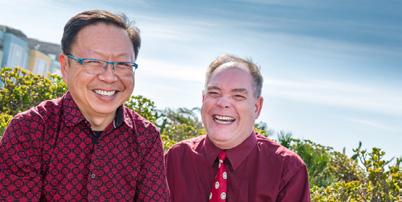

work to be done, but we are glad we reached the agreement in 2022 and we will continue to work to ensure all members of our community are heard, including those who are most marginalized.”
Of course, those aren’t the only issues Pham will face. In addition, there’s determining whether local civ ic groups will be allowed to manage alcohol sales during Pride, but Pham said that a production company for the event hasn’t even been chosen yet, so that decision is still a ways off.
Other matters to be dealt with include meeting increased revenue needs, he said, as well as the increased costs to produce the event, and di versifying revenue streams. The city’s fiscal year 2022-2023 budget included $300,000 for the Pride committee to
help it recover from having to moth ball its in-person parade and celebra tion the last two years due to the CO VID pandemic.
Despite all the work Pham faces, he told the B.A.R. that taking the post was a way of giving back, and of giv ing representation to the city’s diverse communities.
“Marched in every parade since 2001,” he said. “It is a calling and a way of giving back. I love my commu nity, my organization. I am a happy warrior. A third of San Francisco’s population are of Asian descent, and violence within our community has been on the rise. So, visibility and rep resentation is important to our com munity.” t
Freelance Reporters
ARTS
For District 6, that meant removing the Tenderloin, with its many LGBTQ residents, out of the neighborhood and placing it within District 5, represented by progressive supervisor Dean Preston. Engardio saw his Lakeside neighborhood removed from District 7, where he had run for supervisor three times and lost, combined with the Sunset in District 4.
While the San Francisco Chronicle endorsed Engardio, the city’s mainstream paper had backed Mahogany in the District 6 race. Yet Dorsey told the B.A.R. he believes he was able to maintain his seat because voters in the district had connected with his public safety stances.
A recovering addict, Dorsey has made addressing the city’s drug overdose crisis and open-air drug dealing a top priority of his at City Hall. While his detractors painted him as basically a police officer, due to his having been the chief spokesperson for Police Chief William Scott for two years, Dorsey centered his campaign on
ORDER TO SHOW CAUSE FOR CHANGE OF NAME IN SUPERIOR COURT OF CALIFORNIA, COUNTY OF SAN FRANCISCO FILE CNC-22557511
In the matter of the application of EUGENE ED WARD MACDONALD, for change of name having been filed in Superior Court, and it appears from said applica tion that petitioner EUGENE EDWARD MACDONALD is requesting that the name EUGENE EDWARD MACDONALD be changed to GENE EDWARD GERRIOR. Now therefore, it is hereby ordered, that all persons interested in said matter do appear before this Court in Dept. 103N, Rm. 103N on the 6th of DECEMBER 2022 at 9:00am of said day to show cause why the applica tion for change of name should not be granted.
OCT 27, NOV 03, 10, 17, 2022
ORDER TO SHOW CAUSE FOR CHANGE OF NAME IN SUPERIOR COURT OF CALIFORNIA, COUNTY OF SAN FRANCISCO FILE CNC-22557514
In the matter of the application of HALEY CARPENTER HEWITT, for change of name having been filed in Superior Court, and it appears from said application that petitioner HALEY CARPENTER HEWITT is requesting that the name HALEY CARPEN TER HEWITT be changed to HALEY CARPENTER WOODSIDE. Now therefore, it is hereby ordered, that all persons interested in said matter do appear before this Court in Dept. 103N, Rm. 103N on the 6th of DECEMBER 2022 at 9:00am of said day to show cause why the application for change of name should not be granted.
OCT 27, NOV 03, 10, 17, 2022
ORDER TO SHOW CAUSE FOR CHANGE OF NAME IN SUPERIOR COURT OF CALIFORNIA, COUNTY OF SAN FRANCISCO FILE CNC-22557516
In the matter of the application of BARRETT RE UTER WILLIAMS, for change of name having been filed in Superior Court, and it appears from said application that petitioner BARRETT REUTER WILLIAMS is request ing that the name BARRETT REUTER WILLIAMS be changed to BARRETT REUTER WOODSIDE. Now there fore, it is hereby ordered, that all persons interested in said matter do appear before this Court in Dept. 103N, Rm. 103N on the 6th of DECEMBER 2022 at 9:00am of said day to show cause why the application for change of name should not be granted.
OCT 27, NOV 03, 10, 17, 2022
ORDER TO SHOW CAUSE FOR CHANGE OF NAME IN SUPERIOR COURT OF CALIFORNIA, COUNTY OF SAN FRANCISCO FILE CNC-22557512
In the matter of the application of SZU CHIA WU MENON, for change of name having been filed in Superior Court, and it appears from said application that petitioner SZU CHIA WU MENON is requesting that the name SZU CHIA WU MENON be changed to CAROL WU MENON. Now therefore, it is hereby ordered, that all persons interested in said matter do appear before this Court in Dept. 103N, Rm. 103N on the 6th of DECEMBER 2022 at 9:00am of said day to show cause why the application for change of name should not be granted.
OCT 27, NOV 03, 10, 17, 2022
those issues and how they tied into retail thefts, car break-ins, and the ongoing homelessness crisis in the city.

“I thought I would have to do the work convincing the voters they are all related. As I talked to voters, they are already there,” said Dorsey in a phone interview with the B.A.R. “And it is not just in Mid-Market where you’d expect it, it is in the East Cut and Mission Bay. My feeling was whenever I talked to voters about this, they appreciated I was coming from a place of lived experience and this would never be the hot button issue of the month for me.”
Instead, said Dorsey, it is a main reason why he sought to be appointed supervisor and ran for another four years to tackle the intertwined issues.
“It is why I asked for this job. It is an obligation for my survival, and what I intend to work on as long as I have this job,” said Dorsey.
Engardio has also focused on public safety and crime issues in recent years. It, too, appears to have paid off with voters in the more suburban neighborhoods on the city’s westside.
Mahogany had acknowledged as much during her brief remarks on election night at her watch party for campaign staff and supporters.
“Right now in San Francisco we are seeing unprecedented things. On the other side of town a sitting supervisor may be unseated,” she noted. “It speaks clearly where the voters are at. We are seeing people be very concerned about safety and looking for a tough-on-crime message.”
District 10 Supervisor Shamann Walton, president of the board, and District 2 Supervisor Catherine Stefani, who was unopposed, both easily won second terms on the November 8 ballot. The real political fight for Walton will be if he can find a majority of votes on the 11-member board to continue holding the gavel next year.
District 7 Supervisor Myrna Melgar is expected to seek the presidency. Mandelman is likely to also be nominated for the position when the supervisors meet to swear-in the winners of the evennumbered supervisorial races January 8. t
Courtesy California Museum
by Matthew S.Bajko Housinghasbeenapoliticalhotbutton issue in San Francisco for decades, and this year is no exception. It has been top concern among the candidates running this fall for even-numbered supervi sor district seats, as city leaders work to meet a state mandate that they build 82,000 units of housing by 2030. How to do so is the focus of dueling local measuresontheNovember8ballot.Proposition D,knownastheAffordableHousing-Initiative Petition,aimstostreamlinetheapprovalprocess for housing developments while requiring pre vailingwagesandhealthcareforworkers. AmongitsbackersareMayorLondonBreed
The Bay Area Reporter is seeking freelance reporters to write about the diversity of the LGBTQ community – in news, arts, and sports.

For News, this includes local government, LGBTQ and HIV/AIDS nonprofits, LGBTQ community newsmakers, and other matters of interest.
initiative asking female voters to wear pink suits to the ballot box on Tuesday. In an October 20 post on her Instagram account,Rapinoe posted picture of her adorned in pink shirt,jacket and pants combo.
FICTITIOUS BUSINESS NAME STATEMENT FILE A-0398486
The following person(s) is/are doing business as HYP NOSIS FOR HEALTH, 815 HYDE ST #302, SAN FRANCISCO, CA 94109. This business is conducted by an individual, and is signed RICKEY LEE BAUMAN. The registrant(s) commenced to transact business under the above listed fictitious business name or names on 10/13/22. The statement was filed with the City and County of San Francisco, CA on 10/13/22.
OCT 27, NOV 03, 10, 17, 2022
FICTITIOUS BUSINESS NAME STATEMENT FILE A-0398518
The following person(s) is/are doing business as GOMEZ JANITORIAL RESIDENTIAL & COMERCIAL, 901 HAMILTON ST, SAN FRANCISCO, CA 94134 This business is conducted by an individual, and is signed FABIOLA GOMEZ HERNANDEZ. The registrant(s) commenced to transact business under the above listed fictitious business name or names on 10/18/22. The statement was filed with the City and County of San Francisco, CA on 10/18/22.
OCT 27, NOV 03, 10, 17, 2022

FICTITIOUS BUSINESS NAME STATEMENT FILE A-0398550
The following person(s) is/are doing business as NAPOLES TOWING, 4601 MISSION ST #50, SAN FRANCISCO, CA 94112. This business is conducted by an individual, and is signed ANDRES FELIPE VIEDAMERCHAN. The registrant(s) commenced to transact business under the above listed fictitious business name or names on 10/01/22. The statement was filed with the City and County of San Francisco, CA on 10/21/22.
OCT 27, NOV 03, 10, 17, 2022
FICTITIOUS BUSINESS NAME STATEMENT
FILE A-0398551
The following person(s) is/are doing business as GARCIA’S INNOVATIONS, 859 8TH ST, SAN FRANCISCO, CA 94801. This business is conducted by an individual, and is signed DAVID GARCIA. The registrant(s) commenced to transact business under the above listed fictitious business name or names on 10/01/22. The statement was filed with the City and County of San Francisco, CA on 10/21/22.
OCT 27, NOV 03, 10, 17, 2022
FICTITIOUS BUSINESS NAME STATEMENT FILE A-0398508
The following person(s) is/are doing business as BE LUNA CAFÉ, 1195 OAK ST, SAN FRANCISCO, CA 94117. This business is conducted by an individual, and is signed BETEL GEBREYESUS. The registrant(s) commenced to transact business under the above listed fictitious business name or names on 10/17/22. The statement was filed with the City and County of San Francisco, CA on 10/17/22.
OCT 27, NOV 03, 10, 17, 2022
FICTITIOUS BUSINESS NAME STATEMENT FILE A-0398502
The following person(s) is/are doing business as AC COSMETIC, 3055 24TH ST, SAN FRANCISCO, CA 94110. This business is conducted by an individual, and is signed ANA BOLANOS. The registrant(s) commenced to transact business under the above listed fictitious business name or names on 10/14/22. The statement was filed with the City and County of San Francisco, CA on 10/14/22.
OCT 27, NOV 03, 10, 17, 2022
FICTITIOUS BUSINESS NAME STATEMENT FILE A-0398473
The following person(s) is/are doing busi ness as MARINA SUBMARINE, 2299 UNION ST, SAN FRANCISCO, CA 94123. This business is conducted by a corporation, and is signed K A SUBMARINE INC (CA). The registrant(s) commenced to transact business under the above listed fictitious business name or names on 09/21/22. The statement was filed with the City and County of San Francisco, CA on 10/12/22.
OCT 27, NOV 03, 10, 17, 2022
FICTITIOUS BUSINESS NAME STATEMENT FILE A-0398536
The following person(s) is/are doing busi ness as DUKE’S HARDWARE, 2526 NORIEGA ST, SAN FRANCISCO, CA 94122. This business is conducted by a corporation, and is signed WHAT’S NEXT? CORP. (CA). The registrant(s) commenced to transact business under the above listed fictitious business name or names on 08/12/22. The statement was filed with the City and County of San Francisco, CA on 10/21/22.
OCT 27, NOV 03, 10, 17, 2022
FICTITIOUS BUSINESS NAME STATEMENT FILE A-0398545
The following person(s) is/are doing business as KUBA, 2327 MISSION ST, SAN FRANCISCO, CA 94110. This business is conducted by a corporation, and is signed BONGOS ENTERPRISES INC (CA). The registrant(s) commenced to transact business under the above listed fictitious business name or names on 10/21/22. The statement was filed with the City and County of San Francisco, CA on 10/21/22.
OCT 27, NOV 03, 10, 17, 2022
FICTITIOUS BUSINESS NAME STATEMENT
FILE A-0398548
The following person(s) is/are doing business as GYROS & TZATZIKI, 3111 24TH ST, SAN FRANCISCO, CA 94110. This business is conducted by a corpora tion, and is signed GREEK CUISINES INC (CA). The registrant(s) commenced to transact business under the above listed fictitious business name or names on N/A. The statement was filed with the City and County of San Francisco, CA on 10/21/22.
OCT 27, NOV 03, 10, 17, 2022
FICTITIOUS
BUSINESS NAME STATEMENT FILE A-0398525
The following person(s) is/are doing business as SEQUOIA MANAGEMENT GROUP, 64 6 TH ST, SAN FRANCISCO, CA 94103. This business is conducted by a limited liability company, and is signed GLOBAL ROBOTICS EDUCATION GROUP (CA). The registrant(s) commenced to transact business under the above listed fictitious business name or names on 01/01/22. The statement was filed with the City and County of San Francisco, CA on 10/19/22.
OCT 27, NOV 03, 10, 17, 2022
“Whenweorganize,whenwemarch,and most importantly when we VOTE we are unstoppable. From equal pay to abortion access, our freedoms are under attack,” she wrote. “That’s why, this November, we’re showing up – with determination,with joy, and in pink – to cast our votes and demand a government that represents us.” Rapinoe led the U.S. Women’s National Team to win the Women’s World cup in 2015 and 2019,and scored some of the big gest goals in the 2019 tournament as team co-captain. On the Olympic stage, Rapinoe led the team to a gold medal at the 2012 London Games,according to her bio in the hall of fame materials. Newsom and Siebel Newsom praised all of the members of the incoming class, who also include singer Linda Ronstadt, actor Lynda Carter, and Olympic champion ice skater Peggy Fleming.
I emailed him and asked him if minded getting me the book because it’ll probably be banned in my country.”
“Straight From the Heart: A Love Story” (1995) was written by Rod and Bob JacksonParis and was one of the first books by a gay couple in the national spotlight. Bob JacksonPariswas bodybuilderandRodJackson-Paris was a former Playgirl Man of theYear. That online reply from Mickey Lim was the beginning of their relationship. At first Amos LimstruggledtogetavisatocometotheUnit
ed States, but he finally got an education visa in 1999 and came the U.S. to attend school.
For Arts, we are looking to increase coverage of local arts events and local nightlife, each with an LGBTQ focus.

“And the rest is history,”he said. Before that, it was in 1997 when they met in person for the first time, when Mickey Lim visited Singapore. Thirty minutes after meet ing they knew they were meant for each other. Both had boyfriends at the time and they each ended their respective relationships. Amos Lim spoke of the difference between living as a gay man in Singapore and living a gay life in the BayArea.
“It’s night and day,” he said. “It’s not that never came out to people in Singapore, have a very close group of friends that I’m out with, I’moutwithmyfamily,andmyextendedfam ily all know,I’m sure a lot of people know,but we don’t talk about it.” According to Amos Lim, gay life in Singa porewasnon-existent,unlessonewenttobars or sex clubs regularly. Going to dance clubs, he recalled,was risky because the police might raid the club and arrest people.

The B.A.R. also has an opening for a twice-monthly freelance sports columnist. The ideal candidate would focus in part on news leading up to the 2023 Gay Games in Hong Kong. Other issues include the ongoing fights over trans inclusion in sports nationally, and other topics of interest.
Women and people of color and others are strongly encouraged to apply. The B.A.R. is an equal opportunity employer.
For News and the sports columnist freelancers, send a resume and links to previously published articles to Cynthia Laird, News Editor, at c.laird@ebar.com.

For Arts freelancers, send a resume and online links to previously published articles to Jim Provenzano, Arts and Nightlife Editor, at jim@ebar.com
NOTICE OF PETITION TO ADMINISTER ESTATE OF JOAN S. JACKSON IN SUPERIOR COURT OF CALIFORNIA, COUNTY OF SAN FRANCISCO: FILE PES-22-305569
To all heirs, beneficiaries, creditors, contingent creditors, and persons who may otherwise be interested in the will or estate, or both, of JOAN S. JACKSON AKA JOAN KAY SPRATLER JACKSON AKA JOAN SPRATLER JACKSON. A Petition for Probate has been filed by NICOLE LEE JACKSON in the Superior Court of Califor nia, County of San Francisco. The Petition for Probate requests that NICOLE LEE JACKSON be appointed as personal representative to administer the estate of the decedent. The petition requests authority to administer the estate under the Independent Administration of Estates Act. (This authority will allow the personal representative to take many actions without obtaining court approval. Before taking certain very important actions, however, the personal representative will be required to give notice to interested persons unless they have waived notice or consented to the proposed ac tion.) The independent administration authority will be granted unless an interested person files an objection to the petition and shows good cause why the court should not grant the authority. A hearing on the petition will be held in this court as follows: DECEMMBER 12, 2022, 9:00 am, Dept. 204, Superior Court of California, 400 McAllister St., San Francisco, CA 94102. If you object to the granting of the petition, you should appear at the hearing and state your objections or file written objections with the court before the hearing. Your appearance may be in person or by your attorney. If you are a creditor or contingent creditor of the decedent, you must file your claim with the court and mail a copy to the personal representative appointed by the court within the latter of either (1) four months from the date of first issuance of letters to a general personal repre sentative, as defined by section 58(b) of the California Probate Code, or (2) 60 days from the date of mailing or personal delivery to you of a notice under section 9052 of the California Probate Code. Other California statutes and legal authority may affect your rights as a creditor. You may want to consult with an attorney knowledge able in California law. You may examine the file kept by the court. If you are a person interested in the estate, you may file with the court a Request for Special Notice (form DE-154) of the filing of an inventory and appraisal of estate assets or of any petition or account as provided in Probate Code section 1250. A Request for Special Notice form is available from the court clerk. Attorney for petitioner: NICOLE C. KELLY, ESQ. (SBN 320379), THE KELLY LAW FIRM, 345 FRANKLIN ST, SAN FRANCISCO, CA 94102; Ph. (415) 552-0059.
NOV 03, 10, 17, 2022
FICTITIOUS BUSINESS NAME STATEMENT
FILE A-0398542
The following person(s) is/are doing business as HOMEWARD ASSOCIATES, 891 BEACH ST, SAN FRANCISCO, CA 94109. This business is conducted by an individual, and is signed SHAWN KUNKLER. The registrant(s) commenced to transact business under the above listed fictitious business name or names on N/A. The statement was filed with the City and County of San Francisco, CA on 10/21/22. NOV 03, 10, 17, 24, 2022
ORDER TO SHOW CAUSE FOR CHANGE OF NAME IN SUPERIOR COURT OF CALIFORNIA, COUNTY OF SAN FRANCISCO FILE CNC-22557524
In the matter of the application of NICHOLAS COLLACO, for change of name having been filed in Superior Court, and it appears from said application that petitioner NICHOLAS COLLACO is requesting that the name NICHOLAS COL LACO be changed to NICHOLAS ORLOFF. Now therefore, it is hereby ordered, that all persons interested in said matter do appear before this Court in Dept. 103N, Rm. 103N on the 13th of DECEMBER 2022 at 9:00am of said day to show cause why the application for change of name should not be granted.
NOV 03, 10, 17, 24, 2022
ORDER TO SHOW CAUSE FOR CHANGE OF NAME IN SUPERIOR COURT OF CALIFORNIA, COUNTY OF SAN FRANCISCO FILE CNC-22557534
In the matter of the application of RUSHIL PRAKASH, for change of name having been filed in Superior Court, and it appears from said application that petitioner RUSHIL PRAKASH is requesting that the name RUSHIL PRAKASH be changed to RUSHIL MANN. Now therefore, it is hereby ordered, that all persons interested in said matter do appear before this Court in Dept. 103N, Rm. 103N on the 13th of DECEMBER 2022 at 9:00am of said day to show cause why the application for change of name should not be granted.
NOV 03, 10, 17, 24, 2022
ORDER TO SHOW CAUSE FOR CHANGE OF NAME IN SUPERIOR COURT OF CALIFORNIA, COUNTY OF SAN FRANCISCO FILE CNC-22557536
In the matter of the application of PAUL JOSEPH BLOUNT JR, for change of name having been filed in Superior Court, and it appears from said application that petitioner PAUL JOSEPH BLOUNT JR is requesting that the name PAUL JOSEPH BLOUNT JR be changed to YUNUS ABDUR-RAHMAN. Now therefore, it is hereby ordered, that all persons interested in said matter do appear before this Court in Dept. 103N, Rm. 103N on the 13th of DECEM BER 2022 at 9:00am of said day to show cause why the application for change of name should not be granted.
NOV 03, 10, 17, 24, 2022
STATEMENT

FICTITIOUS BUSINESS NAME
FILE A-0398593
The following person(s) is/are doing business as Y NOT UNITE FOR PEACE, 1704 LASALLE AVE, SAN FRANCISCO, CA 94124. This business is conducted by an individual, and is signed TONI HUNT HINES. The registrant(s) commenced to transact business under the above listed fictitious business name or names on 09/26/22. The statement was filed with the City and County of San Francisco, CA on 10/27/22.
NOV 03, 10, 17, 24, 2022
November 17-23, 2022 • Bay area reporter • 11 t Community News>> << SF supe From page 2
Legals>>
<< SF Pride From page 3 Serving the lesbian,gay,bisexual,transgender,and queer communities since 1971 www.ebar.com Vol. 52 • No. 44 November 3-9, 2022 Planning for a BIG Holiday? Let’s talk Turkey! You can borrow anywhere from $500 to $50,000 with our Cash Now! Personal Loan — and have money in your pocket the same day! Visit SanFranciscoFCU.com/personal-loans SFFCU BAR Holiday Strip 9.75x2.25 v01.indd 10/19/22 10:06 02 11 Castro Boy Tar BARchive 17 17 The by David-Elijah Nahmod For Amos and Mickey Lim,a married gay couple who live with their 14-year-old daughter in San Francisco, the road to love was filled with challenges. AmosLim,52,isanemigrefromSingapore, a country where it’s not easy to be gay.Mickey Lim, 58, is white man. Their love for each other and for their daughter runs deep, but they admit that at times they must deal with the prejudices of the outside world. The couple met online in 1995. “IthinkIreachedoutbecause waslivingin Singapore and was struggling with being gay,” Amos Lim recalled a recent interview.“I saw a post that said the reason there’s no love in gay relationships is because we don’t have role models, and Mickey replied saying that’s not true, that there was a couple that just released their book called ‘Straight From the Heart,’ so
and gay state Senator Scott Wiener (D-San Francisco). In fact,Wiener is featured in com mercials touting Prop D and urging voters to rejectPropositionE,titledAffordableHousing Board of Supervisors. SupervisorsConnieChanandAaronPeskin worked with a majority of their board col leagues to place Prop E on the ballot.They ar gueitwillassistinbuildingaffordablehousing while also ensuring there is local control over the design and impact of the projects. Opponents, however, criticize Prop E as containing provisions that will do nothing to speed up approval for housing projects and complain it will still subject 100% affordable housing projects to stringent environmental review. Both measures need simple majority votes to pass,and if both receive 50% or more of thevotenextTuesday,thentheonewiththe most total votes will prevail. The Bay Area Reporter asked in its ques tionnaire for this year’s crop of supervisorial candidates where they stood on the two ballot measures. Their answers ran the gamut from either supporting or opposing them to being neutral on one the two. Courtesy the candidates
onhousingballotmeasures San Francisco Supervisor Matt Dorsey, left, and his challenger, Honey Mahogany, both support the Proposition D housing measure; board President Shamann Walton supports the competing Proposition E; and Supervisor Gordon Mar supports both. See page 14 See page 7 See page 14 >>
Amos Lim, left, and his husband, Mickey Lim, are happily married but still face anti-Asian prejudice on occasion. by Cynthia Laird USA women’s soccer champion Megan Rapinoe has been named as one of the members the 15th class of the California Hall Fame, Governor Gavin Newsom and first partner Jennifer Siebel Newsom announced November 1. The global sports superstar grew up in the Northern Califor nia town of Redding near Mount Shasta. Rapinoe, 37, a lesbian, has been an outspoken advocate for LGBTQ rights, women’s rights, and racial justice. She was awarded the Presidential Medal of Free dom,the nation’s highest civilian honor,by President Joe Biden in July. Ahead of the midterm elections on No vember 8, Rapinoe has urged Americans to exercise their right to vote, especially wom en, as part of theVoting SuitsYou
SFsupervisorcandidatesdiffer
Interracialgaycouplediscusseslove,hate
Soccerstar Rapinoe namedtoCA HallofFame
U.S. soccer star Megan Rapinoe will inducted into the California Hall of Fame next month.
Christopher Robledo
Rainbow center ED departs
HELP WANTED – JOURNALISM
by Brian Bromberger
Allowing the Bay Area to gain an appre ciation for the richness, complexity, and nuances of (queer) film production in the Middle East, the 26th edition of the Arab Film Festival will run November 11-20 in-person at the Castro Theatre, Roxie Theater, and Oakland’s New Parkway Theater. It will also offer a virtual online track open nationally.
The festival’s mission is “to present the best of contemporary films that illuminate the richness of Arab culture through authentic narratives and images, proving insight into the beauty and com plexity of the Arab world.”
Life in wartime
This under-represented and provocative diversity includes several LGBTQ movies, which are now a regular part of the film festival. “Miguel’s War” (Nov. 12, Parkway) is billed as a hybrid documentary, focusing on a gay man who grew up oppressed and shamed during the Lebanese civil war. He was raised by a conserva tive Catholic father and an authoritarian Syrian mother. As a deeply sensitive boy, he wanted to prove he could be a “real man” and joined the fighting as part of an armed faction. Ultimately it was a failure and he immigrates to Spain.
In post-Franco Madrid, Miguel attempts to liberate himself through debauchery with a suc cession of destructive relationships culminating
Arab Film Festival’s diverse LGBTQ stories

in a failed suicide attempt. Recovering he be comes a conference interpreter in Barcelona. Fi nally, 37 years after leaving Lebanon, he’s willing to return there to face his trauma and the ghosts of the past, looking for emotional healing from a form of PTSD and perhaps love.
Filmed in Lebanon and Spain while drawing on a blend of cinematic techniques, “Miguel’s War” melds documentary, animation, theater, and ar chive with him talking to people in his past acted out by current actors, confronting himself in an act of catharsis. Through this character study of one in dividual trauma, the concealed lives of gay Arabs in the 1970s are at last revealed. It was last year’s win ner of the TEDDY Award for Best Feature Length film at the Berlin International Film Festival.
by Robert Brokl
The powerful exhibition of work by San Francisco artist Bernice Bing recently opened at the Asian Art Museum, with its run extended through June. There’s ample reason for the revival of interest in Bing’s work and life, nearly a quarter century after her death in 1998. The Museum acquired 24 of the works on view for their permanent collection, part of a new emphasis upon “under-recognized modern and contemporary Asian American artists.”
Bing (Bingo to her friends) identified her ob stacles as being a woman, Asian, and lesbian. The narrative that identifies Bing as a bridge between cultures and identities doesn’t do justice to her evolution and search, nor to her as yet unfixed place in Bay Area art history.
Other local Asian-American artists like Ruth Asawa and Hung Liu have established national reputations, but Bing was saddled with a diffi cult childhood. Born in San Francisco’s China town in 1936 to a Chinese immigrant father and an American-born Chinese mother, with the Chinese Exclusion Act still on the books, Bing’s mother and aunt broke with tradition, working in the Forbidden City nightclub in San Francisco, her mother as a “hot girl” dancer and waitress. But her mother died of a heart attack when Bing was five, and her father died in prison about the same time. Bing and her sister were placed in Cauca sian foster homes, even though her aunt and grandmother were still alive.
Art rebel
Bernice Bing
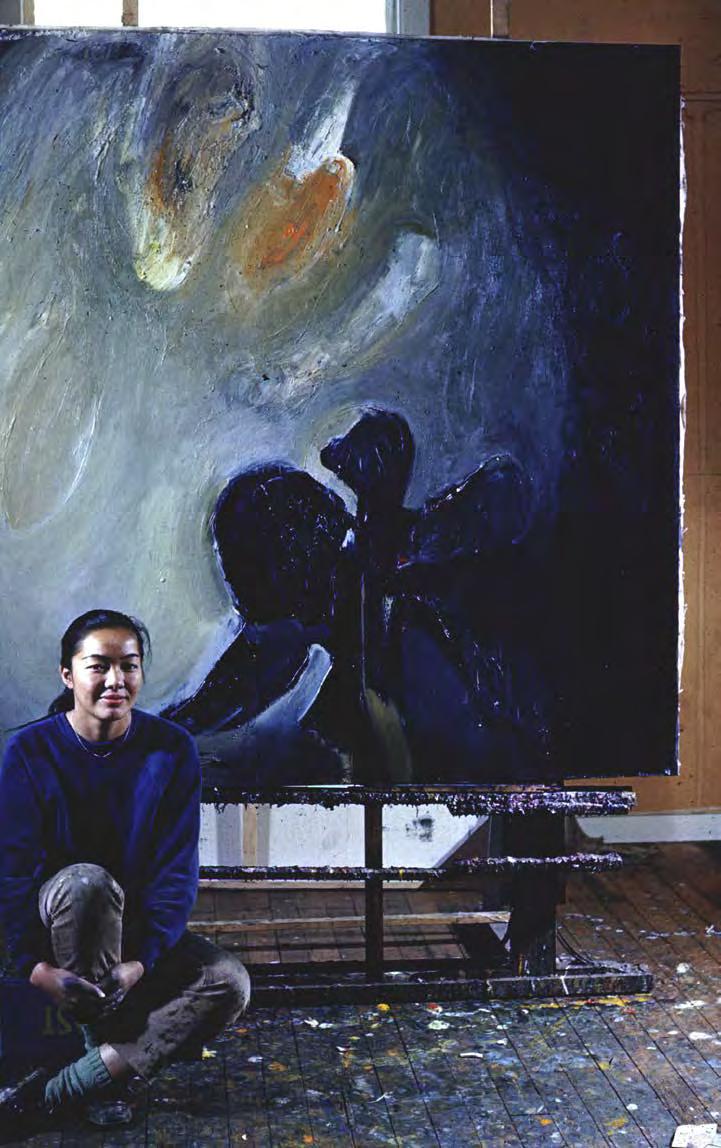
The young Bing was described as rebellious, but her grandmother’s encouragement of her drawing ability gave her a direction. After grad uating from Oakland Technical High School, Bing won a scholarship to attend California College of the Arts (and Crafts), where she stud ied with mentors and influences like Richard Diebenkorn, Nathan Olivera and, significantly, Saburo Hasegawa, who exposed her to Asian art, Chinese philosophers, Zen Buddhism, and calligraphy.
After a semester, she transferred to the Califor nia School of Fine Arts (renamed San Francisco Art Institute). She got her MFA in 1961, and fel low graduates and friends included luminariesto-be like Joan Brown, Leo Valledor, William Wi ley, Robert Hudson, and Cornelia Schulz.
Summer time
“Shall I Compare You to a Summer’s Day?” (Nov. 18, Roxie) is a contemporary queer mu sical taking Arab folk tales as its formal refer ence, and Egyptian pop music as its primary sonic material. It is based on this Egyptian filmmaker’s personal love diary and told in the form of a “One Thousand and One Nights” tale, where stories playfully unfold through conver sations between Scheherazade, a narrator we never see and ghost of former lovers. Through poetry and performance, this one- hour film functions as an inventive challenge to societal heteronormativity.
Her visibility continued with participation in the “Gangbangers” show at the almost mythical Batman Gallery, one of four women, including Jean Conner and Brown. Batman was established by poet Michael McClure and artist Bruce Conner, who painted the walls, floor, and ceiling black.
Bing had a follow-up solo show the same year, with large expressionist paintings showing early promise and verve, reflecting the influences of Diebenklorn, deKooning, and Gorky. “A Lady and a Road Map,” an oil painting from 1962, is the standout from this period. Loose, exuberant, painterly brushwork, color choices referencing both the figure and nature, including the bright pinks in the sketchy female figure reminiscent of deKooning’s famous “Women” series.
Bing had a close friendship with Brown in particular. Brown entitled a 1960 painting of her pitbull, “Portrait of Bob for Bingo,” and she ac companied Brown to her Staempfli Gallery show in New York the same year. Some of Bing’s painthandling from this period is similar to Brown’s impasto technique.
Beats and Batman
Natasha Boas, writing in Square Cylinder in Oct. 16, 2019, notes the “…art world marginaliza tion that came from being an Asian-American les bian artist coming up in the avant-garde world of the SF Beat artists in North Beach, a milieu domi nated by hetero-normative-couple culture and the white male artists who were her classmates at SFAI. Jean and Bruce Conner, Manuel Neri and Joan Brown, Wally Hedrick and Jay DeFeo were some of the twosomes living and working in the building at 2222 Fillmore (also home to Batman Gallery) that became known as Painterland.”
The 2013 documentary, “The Worlds of Ber nice Bing” produced and directed by Madeline Lim, reports that Bing had another life going, too: a “wild butch, smoking Shermans, and drinking brandy“ in lesbian bars. She lived in her studio above the Old Spaghetti Factory in North Beach, where she also waitressed.
But she soon made the life –and careerchanging– decision to move to the Mayacamas Vineyard, in Western Sonoma, to live and work for three years. There her work turned even more to landscape-influenced imagery. She returned for a Berkeley Gallery show. Her selfimposed retreat from the thriving cultural scene
‘Habib & The Thief’
Bernice Bing in front of her ‘Dark Angel’ painting, approx. 1959–1961.
Asian Art Museum’s showcase of the rediscovered artist
See page 14 >> See page 14 >>
Photograph courtesy the Estate of Bernice Bing;
<< Arab Film Fest
From


The theme of this year’s “Queer Lens” program (Nov. 12, Parkway) is Diaspora & Displacement, featuring five award-winning short films with the characters all finding themselves at the intersection of their identities.
“Habib & The Thief,” concerns Habib and his new lover brought together by a stolen cape. “The Window,” features two women, a year after Beirut’s port explosion, reunited in their old bed room. “Faraway” observes a young Arab man over four seasons navigat ing his solitude after being estranged from his family for his homosexuality.
“Dress Up” follows Karina, on the eve of her sister’s wedding, bringing her
Bernice Bing
From page 13
in San Francisco invites comparison with an alternative path taken by Joan Brown, whose retrospective just opened at SFMOMA.
Like Bing, a child with an unhappy childhood who pursued a spiritual path as an adult, Brown thrived in the male-dominated art world, scoring representation complete with stipend fresh out of school with the Staempfli Gallery, and securing a tenured teach
“best friend” home to meet the family, resulting in queer anxieties. “Warsha” chronicles Mohammad, a crane opera tor working in Beirut, who volunteers to take on one of the tallest and most dangerous cranes in Lebanon, enabling him to live out his secret passion to find freedom.
Caftans and conversation
A panel discussion entitled “Arab + Queer + Film: Between here and there,” will follow, asking how does queerness as a lens engage with every day precarity in the Middle East? How does queerness make sense of the alienating experience of displacement in the West? It discusses queer films as spaces of reflection and contesta tion and as frameworks for alterna
ing position at UC-Berkeley. Her estate is now represented by the blue-chip Matthew Marks Gallery in New York.
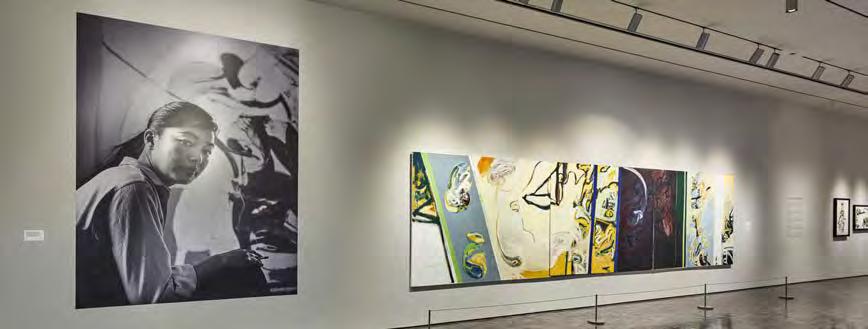
Career shift
With Bing’s isolation at Mayac amas came other setbacks: a group of paintings including “Elements” were stolen. In 1967, Bing sold enough of her artwork to pay for a stay at the Esalen Institute in Big Sur, as their first resident artist, pursuing her in terest in New Age philosophy and the teachings of Carl Jung.


tive world-making. Panelists include filmmakers of the Queer Lens shorts program, moderated by Raed Rafei, a PhD candidate in Film and Digital Media at UC Santa Cruz.
The opening night star attraction is Morocco’s “The Blue Caftan,” zeroing in on quiet Halim and stern Mina, a mar ried couple running a traditional caftan (the national garment) store at one of the country’s oldest medinas located in the town of Sale. In order to keep up with more orders from their demand ing customers, they hire talented hottie 25-year-old apprentice Youssef, who seems dedicated to learning embroi dery and tailoring from Halim. Mina notices the erotic looks Halim is giv ing to Youssef, making her initially distrustful of him, even accusing him
Back in San Francisco, Bing became an activist and arts administrator. She served as director of the South of Market Cultural Center (now SO MArts) from 1980 to 1984. Experi encing burnout, and needing to re charge, Bing won a Fulbright grant to go to China in 1984-85. As a Chinese woman raised in Western society and culture, including western art tech niques like oil painting, she developed through her studies in China a greater appreciation for Eastern art forms like calligraphy, while deepening her con nection to Buddhism.
She wrote: “Chinese calligraphy has been evolving for six thousand years, whereas in our Western society we are but primitives experiencing a new aes thetic. I am attempting to create a new synthesis with a very old world.”
Upon her return, Bing once again chose a more pastoral retreat, this time in the hamlet of Philo in Men docino County, living in a barn stu dio, tending goats and working as a cook. The important large (12’X8’) early painting,“Dipytch,” was ruined by damp.
But she also met the Mills College art professor Moira Roth, who cham pioned her work. Through Roth, she became a founding member of the Asian American Artists Association (AAWAA).
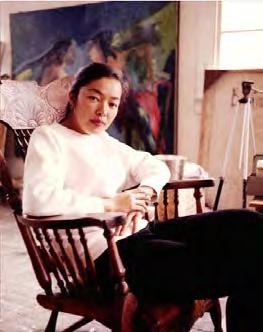
Her major last series, on view at AAM, are the watercolor and mixed media paintings on paper on the lotus theme, based upon calligraphy. They display a mastery of control and spon taneity. Her apotheosis is probably “Epilogue,” from 1990-95. A long (6’ X 24’), horizontal oil on canvas work, the piece includes her early, abstracted
falsely of stealing some pink satin cloth.
Halim is a closeted homosexual who retreats to the local steambath where he cruises for anonymous sex hook-ups. Mina is aware of his secret life, but they have a close enduring re ciprocal relationship in spite of their conflicting desires and religious/cul tural norms. He’s the artisan hiding from the world while she’s the shrewd businesswoman dealing with temper amental customers.

Halim’s and Youssef’s relationship gradually unfolds through the breath taking petroleum blue silk wedding caftan they are creating for a client. The camera reveals the intricate em broidery almost sewn hypnotically, serving as a tool of seduction between the two men. There’s a kind of sensual
ity as we watch the precision needle work done on these gorgeously tex tured fabrics, which reminded us of scenes from Paul Thomas Anderson’s “Phantom Threads” (2017) about a compulsive fashion designer. The pace of the movie is slow but contempla tive, allowing the audience patiently to get a sense of their daily world.
Mina experiences a life crisis, forcing her to redefine her love for her husband and reevaluate her attitude towards Youssef, who is slowly becoming a member of their family. She tells Halim not to be afraid to love, regardless of the form it might take or the dictates of society. The film brilliantly draws a parallel between Halim’s love of his tra ditional role as maalem (dressmaker) and pride in his work with a plea for tolerance vis-à-vis queer people.
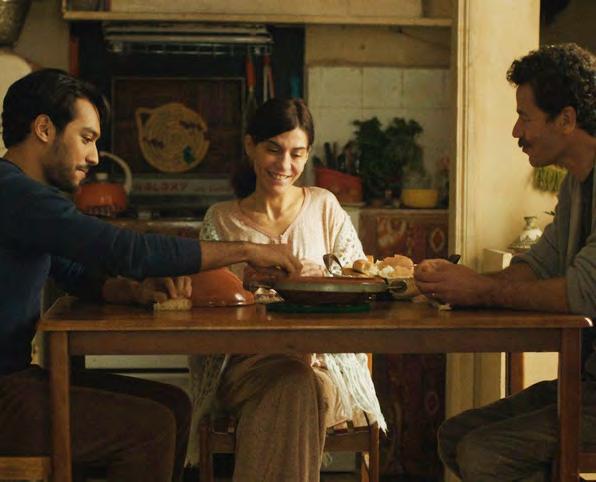



The film surprises us in its clever subversions, arguing that while there is a place for maalems in this seem ingly outdated field, society can also evolve and modernize, especially in its attitude toward LGBTQ folk while respecting traditional mores.
“The Blue Caftan” is really about unconditional love, never judging its very human characters, willing to for give their flaws. The film garnered rave reviews at the Toronto Film Festival. Well-deserved applause for filmmaker Maryam Touzani in crafting probably the best LGBTQ film of the year. If you miss the Nov. 11 premiere at the Castro Theater, it is worth a BART ride or car trip to the Parkway, Nov. 19 to catch this stunning feature.t
www.aff2022.eventive.org
past in unexpected ways. Enter “Team Bingo” (self-described), a determined cohort of mostly Asian-American women artists, art professors, writers, and art professionals, mostly lesbians, who dedicated themselves to docu menting, preserving, promoting, and placing Bing’s artwork and papers.
Lenore Chinn, Elisabeth Cornu (long affiliated with San Francisco’s GLBT Historical Society), Kim Anno, Flo Oy Wong, Alexa Young, and Frieda Weinstein are just some of this group, and Rudy Lemcke developed the Queer Cultural Center’s website’s featuring Bing.
figures and later calligraphic flourish es in gestural brush work, with a pre dominance of sunny yellow, bisected top to bottom by a dark vertical; a metaphor for her life?
Legacy
By the mid-1980s, Bing’s invisibili ty and marginalization was evidenced by her bare appendix mention in critic Thomas Albright’s canonical tome, “Art in the San Francisco Bay Area, 1945-1980,” that showcased her contemporaries like Brown, Wiley, DeFeo and Hudson. She remained in touch with some of them, attending Jay DeFeo’s 60th, and last, birthday party at her Oakland loft, along with Brown and Neri.
Bing died age 62 in 1998, of lupus, hemochromatosis (a dangerous buildup of iron in the blood), and cancer.
But Legacy Land has a way of re freshing reputations, churning the
Bing’s revival was sparked by the 2019 solo Sonoma Valley Museum of Art exhibit, with catalog, some thirty years after her memorial solo show at the SOMAR Gallery in 1991. Re cently, the Fine Arts Museums of San Francisco acquired “Mayacamas IV, Bismarck Saddle,” from 1963.
The former art critic for the SF Chronicle, Charles Desmarais, wrote a rather sour ‘What if?’ review of Bing’s Sonoma show, suggesting her career and work were stunted by too few re sources, distractions like work and community participation, rural isola tion, etc., but I would disagree. While many artists have built reputations upon creating a brand and endless rep etition of work proven commercial, art ists like Bernice Bing, who stubbornly and intuitively follow their own paths, however lonely or difficult, finding their own truths, are the nobler ones.t
‘Into View: Bernice Bing, through June 26, 2023, at the Asian Art Museum, 200 Larkin St. www.asianart.org
14 • Bay area reporter • November 17-23, 2022 t << Film & Fine Art StevenUnderhill 415 370 7152 • StevenUnderhill.com Professional headshots / profile pics Weddings / Events
page 13
<<
‘Into View: Bernice Bing’ exhibition installation
Asian Art Museum
Bernice Bing in her studio, c. 1970.
Estate of Bernice Bing
Left: ‘Miguel’s War’ Middle: ‘Shall I Compare You to a Summer’s Day?’ Right: ‘The Blue Caftan’
Superb performances, senseless

script
strange, blood-drenched dreams. Amat tells Amir that he’s had these dreams before and that he doesn’t want to lose Amir. The next day they are taken on a tour of the rain forest by Amancaya’s brother Amaru (Vitorio Lema). After this, the film goes off the deep end.
For reasons that are unexplained, the film repeats lines of dialogue in different settings. Soon it becomes apparent that Amat isn’t the only one who’s having visions; Amir is as well. Then it’s revealed that Amaru doesn’t actually exist; he’s a figment of Amancaya’s imagination, which raises the question: if he doesn’t exist, then how could he have taken Amir and Amat on a tour of the rain for est? Are Amir and Amat imagining him too?
by David-Elijah Nahmod
“Blood-Red Ox” is a strange film. It features extraordi nary performances from a superb cast, but the script makes little sense. Co-written and directed by Ro drigo Bellott, an ac claimed openly gay filmmaker from the South American country of Bolivia, what he is trying to convey with his lat est work will most likely go over most people’s heads.

Shot partially in

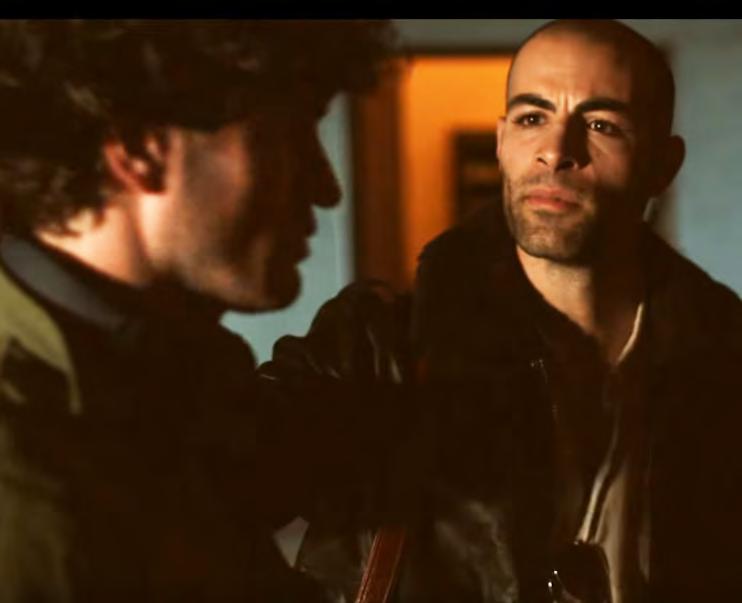
The scenes spoken in English have Spanish subtitles, while the Spanish scenes have English subtitles. The film begins simply enough. As the story opens, gay couple Amir and Amat (Mazin Akar, Kaolin Bass) have travelled from their upstate New York home to Bo livia, where they will spend time with Amir’s friend Amancaya (Andrea Camponovo), an environmental ac tivist. As they drive from the airport to Amancaya’s house, they come across an
This is but one of the questions in the film that is never explained. Although visually stunning, the film because almost impossible to follow. What’s real and what’s imagined? Which visions belong to whom? These questions cannot be answered.
Eventually we’re told that Amir and Amancaya knew each other when they were in the same mental hospital. At this point I threw my hands in the air and gave up. Maybe I’m missing something, but this film just doesn’t make any sense.
Akar and Bass play their descent into madness beautifully. Both of fer intense performances. In their scenes together they are desperate and frightened. As Amir and Amat, they make for a lovely couple. Cam ponovo is equally good as Aman caya, who is also having visions of her own. But good acting cannot save a film that just doesn’t make
‘Spoiler Alert’ screening @ Castro Theatre
by Steven Underhill
The Castro Theatre’s November 14 advance screening of the new gay movie “Spoiler Alert” (Focus Features), based on the memoir by Michael Ausiello, was sponsored by Frameline. Attendees also enjoyed an onstage talk with costars Jim Parsons, Ben Aldridge and author Ausiello. www.focusfeatures.com
Enjoy more photos at facebook.com/lgbtsf.nightlife
And see more of Steven’s work at www.stevenunderhill.com
November 17-23, 2022 • Bay area reporter • 15 ‘Blood-Red
t Film >>
Ox’
photo
Kaolin Bass and Mazin Akar in ‘Blood-Red Ox’
Dale Boyer
by Gregg Shapiro
In the small gay world of Chicago’s literary scene, I first encountered writer Dale Boyer via his involvement in the gay writers’ group New Town Writers in the early 1990s. By the time he joined NTW, I had left the group and started my own.
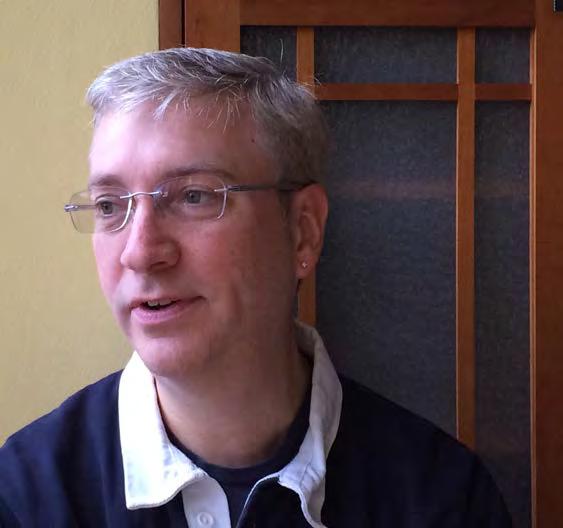
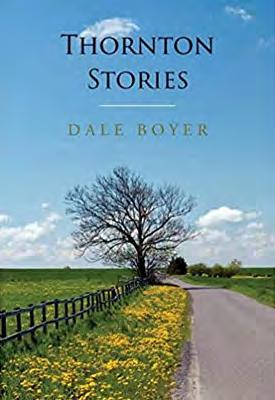
However, our paths crossed regu larly at various literary functions. Since those early years, Dale has published a few poetry collections, a novel, a book of short stories, and a children’s book. All of this in addi tion to being the Director of Conflicts and Records for a mid-size law firm in Chicago’s Loop. Dale was generous enough to make time for an interview regarding his new book, “Columbus in the New World: Selected Poems” (Oh Boy Books, 2022).

Gregg Shapiro: Dale, your new book “Columbus in the New World: Selected Poems” features a Mark Doty blurb and a Jorie Graham quote in the poem “The Walnut Room.” Do you consider both poets to be influences? Who are some other influences?
Dale Boyer: Graham’s work I was always aware of but am only now be ginning to read. Mark Doty’s work has always been an influence, as I think it has to have been for nearly every gay poet writing these days. He’s not only an essential poet of the gay experience but also one of the great poets of the twentieth century, period. Early on, I was greatly influenced by Wallace Stevens, and my work has always had this pull between the very terse (Ste vens) and the very emotional (Doty). I also love Robert Hass, who found a kind of middle course, and I love Jean Valentine’s statement that poems are essences. I’ve always been very drawn to the evocative, fragmentary bits, the ruins that conjure up the greatness that was Rome.
Novelist and poet on his writing
With whom did you study when you received your MFA at Ver mont College?
Mark Doty, Mark Cox, and Leslie Ullman; great poets and excellent teach ers, all. Vermont College has a low-resi dency format for their MFA. You spend less time on campus, but you get a great deal more individualized attention. It was the perfect solution for me.

You write both fiction and po etry. Do you have a preference for one or the other?
I like them both. Early on, I thought I had to call myself a poet, or a nov elist, or whatever. Now, I’m happy to just call myself a writer. I’ve also done a screenplay and a play. I think they all inform your work.
You live in Chicago, a city known for its vibrant poetry scene. Have you been active in it? Done a poetry slam?
Early on I was. Indeed, that’s where I first met you, via New Town Writers. The pandemic put many readings on hold, though I think some are com ing back. I’ve also participated in some virtual readings and even virtual book clubs, which actually went very well.
Why was now the right time to put out a selected poems collec tion?
It just felt right. I think the pan demic created a lot of room for contemplation, and when I looked at my work, I started to see that it had a certain shape. There was al ways the Columbus imagery in the early poems; that theme of exploring new worlds of sexuality and com ing out. Then, I began to see that my middle work was heavily involved with exploring religion and what I still believed. And, after the death of our parents (my partner and I lost all four of our parents in the space
of five years), there was that theme of exploring a world without them, a world of loss. So, the Columbus theme seemed like a good way to frame all of them.
What was involved in the pro cess of selecting poems for the book?
Just literally putting all of them in the center of the room and begin ning to sort. The early manuscript was much longer, and then I began to see that certain poems still didn’t fit, some were duplicative. Then, I had a few people read and offer advice.
Poems from the first section of the book are about coming out and coming into your own as a gay man. Do you have a favorite poem from that section, one that you think is most representative of who you were at that time?
I started the book with the very first poem I wrote at Vermont, in a class exercise with Mark Doty. It used Marianne Moore’s poem “The SteepleJack” as a starting point for exploring a physical setting or a feeling, and I flashed on an experience I’d had as an intern in Washington, D.C in college, where I witnessed a man speaking to his son in Spanish. It became a dia logue with my own father about being gay, and ultimately set up the theme of exploration for a great deal of the rest of my work.
Your husband Scot O’Hara is also a writer. Did you seek his input when putting this book to gether?

Absolutely! Scot is not only a great writer (“Tarantella”) but a great editor as well. In fact, he’s given me the final edit of everything I’ve ever written. I trust his judgment implicitly.
Do you share work with each other when you’re creating?
Pretty much only after we feel like we’re done. I like to think we’re good editors of each other’s work, but it has to be pretty well along before we show it to each other.
You’ve also been writing book reviews. What do you like best about that?

I love feeling like I have a voice in the conversation. Being in the Midwest, it often seems as though we’re outside of the literary world on either coast. I often think the gay experience in the heart land is overlooked as well, which is part ly why, with my novel (“The Dandelion Cloud”), and my short stories and chil dren’s book (“Thornton Stories,” “Justin and the Magic Stone”), I attempted to give a voice to the gay experience of the whole middle section of the country that is often not represented.
Is there a recent book you re viewed that you’d like to recom mend?
I didn’t actually review it, but I re cently read an older book by Neal Bartlett called “Ready to Catch Him Should He Fall,” which I was absolutely flabbergasted by. It wasn’t on my radar at all, but I actually think it may be the great gay novel of the older generation (meaning, most of the twentieth cen tury!). It’s funny, elegiac, lyrical, arche typal, metaphorical, and extremely moving. I’ve also encountered works like “Bitter Eden” by South African writer Tatamkhulu Afrika, and “Radio” by Tonu Onnepalu, from Estonia. These are dazzling, really important works I might never have discovered except for the fact that I was reviewing them. That’s what I enjoy about reviewing so much: it really puts you in touch with your community.t
16 • Bay area reporter • November 17-23, 2022
t << Books
Author Dale Boyer
Take in our vibrant California Coast exhibit and help us restore biodiversity for a thriving California—and planet. Because every visit supports our mission to regenerate the natural world. Make a reservation at calacademy.org

‘Tis the Season for Science
Celebrate the season with falling snow, festive activities, and more!
AQUARIUM + PLANETARIUM + RAINFOREST + LIVING MUSEUM
31850-CAS-Evergreen-TodayTomorrow-RockyReef-Bay Area Reporter-9.75x16-11.10.22-FA.indd 1 11/10/22 3:07 PM
Resisting Temptations
by Jim Gladstone
Born at Berkeley Reper tory and now playing at the Golden Gate Theatre as part of a post-Broadway na tional tour, “Ain’t Too Proud” is not so much a musical as a deliciously slick nightclub act regularly interrupted by read ings from a reference book.
Director Des McAnuff has applied dramatic structure and production style almost identical to those of his 2005 money-printer, “Jersey Boys,” the story of the Four Seasons Michigan contemporaries, The Temptations. A modernday old-timer, in this case Temps’ founding member Otis Williams (Marcus Paul James) speaking from his death bed, recalls the formation, suc cess, glories and tribulations of a cel ebrated American vocal group.
Scenes whiz by in a tidy chrono logical timeline. Sets and dialogue are minimal. The storytelling is carried by Williams’ brief spoken interludes more than any dramatic interaction of the characters.
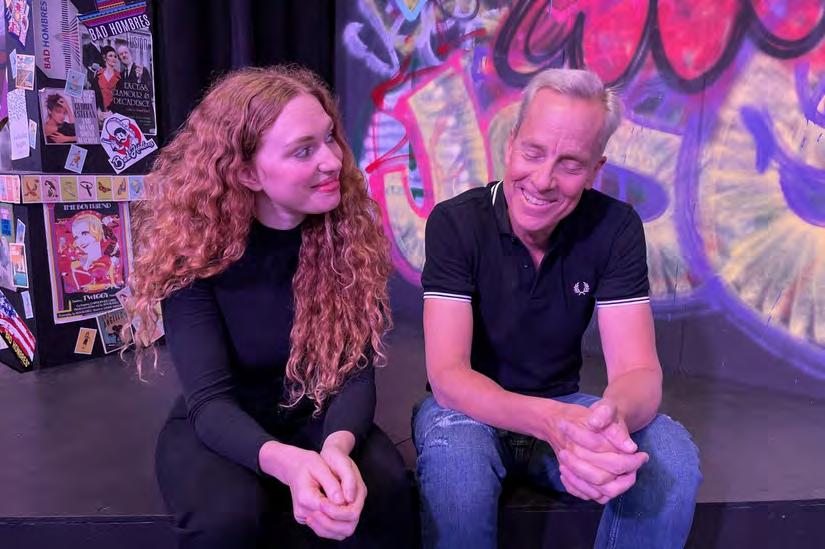
James, Harrell Holmes Jr., Jalen Harris, James T. Lane, and Elijah Ah mad Lewis ace the five-part harmo nies of irresistible hits including “Get Ready,” “My Girl,” and “The Way You Do The Things You Do” (arranged to a Broadway sheen by Kenny Seymour) and dazzlingly synchronized foot work (choreographer Sergio Trujillo sets a high bar; they clear it with shiny finesse). It would be an absolute plea sure to see this show’s cast in a straight forward concert format (Which you can actually do; see below).

But Otis’ inelegant narration, writ ten by playwright Dominique Mor riseau (“Skeleton Crew”; “Pipeline”), feels like a superfluous stent jimmied into the heart of the proceedings (Morriseau won a MacArthur grant a year after “Ain’t It Proud” debuted on Broadway, but this particular script feels like mercenary work). The show repeatedly soars toward musical eu phoria, then hits prosaic arryhthmia.
The script for “Ain’t Too Proud” is also particularly cringe-worthy in its efforts to draw connections between the evolution of The Temptations and American history. While it’s worth noting that some of the group’s music took on a darker, unsettled tone with the rise of the Civil Rights movement (“Runaway Child, Running Wild”; “I Wish It Would Rain”), it’s an egregious overreach to tie the assassination of Martin Luther King to the death of Motown singer Tami Terrell, a onetime romantic partner of the Tempta tions’ showboating David Ruffin.
As Ruffin, Elijah Ahmad Lewis de livers some of the show’s most growli cious vocals and overtly athletic dance moves, literally splitting the difference between peak-slick Temptations style (when Motown Records pressured them to appeal to white audiences) and James Brown’s more feral funk performances. Meanwhile, Jalen Harris brings a compelling Michael Jackson eeriness to his rendering of Eddie Ken dricks (His forelock-like microphone further accentuates the alien vibe).
But overall, despite these character distinctions, The Temptations come across more as a five-headed creature than a group of unique personalities. Frankly, that’s what Motown, known as The Hit Factory, hoped for as the
original quintet gradually became Otis Williams and a revolving cast of replacement singers. The Tempta tions was about product, not people, universally resonant songs rather than unique individuals’ stories.
Likewise, “Ain’t Too Proud” lever ages those great songs, rather than any distinctive narrative or original theatrical conceit, to distinguish itself from a crowded field of lukewarm jukebox biomusicals, from “Jersey Boys” to “Motown: The Musical” (ahem) to “A Beautiful Noise,” Broad way’s soon-to-open Neil Diamond hagiography.
The songs, the singing and the dancing are spectacular. Which may be enough for audience members more eager for a light night out than an insightful piece of theater. As an additional crowd-pleaser, the main cast will perform in an REAF benefit November 28; see below.t

‘Ain’t Too Proud’ through Dec. 4. $56-$256. Golden Gate Theatre. 1 Taylor St. (888) 746-1799. www.broadwaysf.com
One Night Only with the Cast of ‘Ain’t Too Proud’ (benefit for Rich mond/Ermet Aid Foundation). Nov. 28. Strand Theatre, 1127 Market St. $45-$69. www.reaf-sf.org
A new spin on reality
daughter’s one-time lover; said daugh ter also now being dead daughter, per haps reunited with Jordy’s own former lover, the daughter’s mother, also al leged to be dead.
“Slice of Life” heedlessly screws with the boundaries between real ity and imagination, autobiography and fiction. “Alice in Wonderland,” is evoked in theater exercises that Jordy works on with Roxanne, Lewis Car roll’s nods to drug-induced visions feeding into Roxanne’s references to substance-related disassociation. Sometimes the show is maddening; sometimes it makes you worry that its creator is actually –disturbingly–mad.
by Jim Gladstone
The new play written, starring and directed by John Fisher, the Ar tistic Director of Theatre Rhinoceros is called “A Slice of Life.” That’s a warm and homey misnomer for a show that finds Fisher not only slicing, but dicing, chopping, shredding and puréeing the domestic storyline he initially teases into an unnerving phantasmagoria.
Were I The SF Chronicle, I might award it a little man in a chair scarfing julienne fries.
The show starts out seeming like cute, pat, seriocomic homo pablum: Jordy (Fisher), a Fisher-like queer the ater-maker who lives and works in a wee, threadbare performance space is confronted by an unexpected visitor.

Roxanne (Flannery Mays, effort lessly charismatic) is the 22-year-old daughter Jordy abandoned as an infant, leaving her –and her mother– behind to find himself and make art in San Francisco. She’s an actress now and, having heard that her father is a theatri cal mover and shaker, wants to hit him up for connections, not to mention psychodrama and reconciliation.
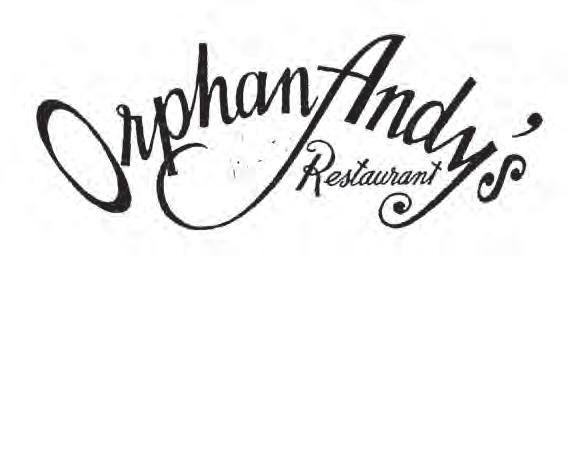
But Jordy/Fisher, is no mover/shak er; he’s a slicer/dicer/etceterer. The play wright/actor deliberately tinkers with his own identity, having Jordy perform excerpts of a WWII-themed mono logue very much like ones Fisher him self has performed in this very space.

And Roxanne may not be Jordy’s daughter (She’s certainly not Fisher’s; he has no children), but rather said

At times during this past Sunday’s sparsely attended performance, the show felt extremely discomforting, even embarrassing. During one of the amateurish, overwrought war mono logues he says he performs alone, for himself, Jordy (or the character he’s playing in the monologue, or Fisher, who is playing Jordy) directly ex horted the theater Rhino audience to provide wind storm and machine gun sound effects.
I sincerely hope that “Slice of Life” is provocative experimental theater, an intentional exercise in audience bewilderment. If that’s to your taste, by all means make haste to watch Fisher toss his conceptual salad.t
‘Slice of Life,’ through Nov. 27. $15-$25. Theatre Rhinoceros, 4229 18th St. (415) 552-4100. www.therhino.org
18 • Bay area reporter • November 17-23, 2022
t << Theater PRESENTS FROM ClubFugaziSF.com | 415-273-0600 CLUB FUGAZI | 678 Green Street | San Francisco “HIGHEST RATING! A VALENTINE TO THE CITY.” – SF Chronicle “A LOVE LETTER WRITTEN FOR EVERYONE!” – KQED Arts “DIZZYING NEW HEIGHTS.” – SFist “JAW-DROPPING. THE SHOW IS A STUNNER.” – Hoodline “A WORLD OF WONDER AND AWE.” – Culture Vulture “BRINGS THE WOW THE WONDER, THE MAGIC.” Shows Weds—Suns Drinks & Small Bites Available “BEST NIGHT OUT!” – SF Magazine “BREATHTAKING.” – SF Examiner “MESMERIZING. MUST SEE.” – KCBS Join us for our holiday shows, now through New Year’s Eve! A terrific way to celebrate the season with family, friends, co-workers. Gift packages available. EAT, DRINK, AND BE MERRY! EAT, DRINK, AND BE MERRY! “A CELEBRATION.” – KQED Arts 3991-A 17th Street, Market & Castro 415-864-9795 Proudly serving the community since 1977. Open Daily! New Adjusted Hours Monday 8am (last seating 9:45pm) Tuesday 8am (last seating 9:45pm) Wednesday 8am (last seating 9:45pm) Thursday 8am Open 24 Hours Friday Open 24 Hours Saturday Open 24 Hours Sunday 7am (last seating 9:45pm)
The cast of ‘Ain’t Too Proud’
Flannery Mays as Roxanne and John Fisher as Jordy in ‘A Slice Of Life’
Crystal Liu
by Gregg Shapiro
For a number of years, “younger” music industry people have been calling our attention to older perform ers that some folks might have forgot ten, rescuing them from the dustbin (or cutout rack) of obscurity. Exam ples include musicians Jeff Tweedy (Mavis Staples) and Jack White (Lo retta Lynn), producer Rick Rubin (Johnny Cash), and Anti- records’ Andy Kaulkin (Bettye Lavette).
Grammy-winning queer singer/ songwriter Brandi Carlile, who re cently played a part in Joni Mitchell’s return to live performance, was in strumental in the revival of country music legend Tanya Tucker. Car lile co-produced Tucker’s 2019 album “While I’m Livin,’” for which she won a couple more Grammys and co-wrote most of the songs (including “Bring My Flowers Now” with Tucker, from which the album gets its title). The re cording sessions for that album make up a considerable portion of Kathlyn Horan’s documentary “The Return of Tanya Tucker: featuring Brandi Car lile” (Sony Pictures Classics).

Combining studio footage, along with numerous vintage visual and au dio clips, Horan paints a compelling portrait of Texas-born and Arizonaraised Tucker as an influential country music artist, one of the few original female performers associated with the “outlaw country” scene. Being managed by her father, and achieving success in her early teens, was both a blessing and a curse. By 16 she had a record contract and made regular ap pearances onstage and on TV.
But she hit a rough patch and her career got “distorted a little bit.” Some
of the distortion included her sub stance-fueled relationship with Glen Campbell who was 19 years her senior.
Among the many other things we learn about Tucker is that while she had a longstanding friendship with Loretta Lynn (who was often offering to send her money), her heroes, including Elvis and Merle Haggard, were all men. Like Elvis, Tucker was not one to get up on stage and stand still.
Regardless of her talent, we wit ness Tucker’s insecurity, during the more recent footage which involves the recording of “While I’m Livin’.”
In fact, there are numerous touch ing sequences in Carlile and Tucker’s interactions. Particularly poignant moments occur when she tells Tanya that she considers her to be as impor tant as Dolly Parton when it comes to the country genre. The scene in which they begin the co-songwriting process for “Bring My Flowers Now” is magi cal, and the way Carlile helps Tucker through the recording of the cover of “The House That Built Me” is espe cially moving.
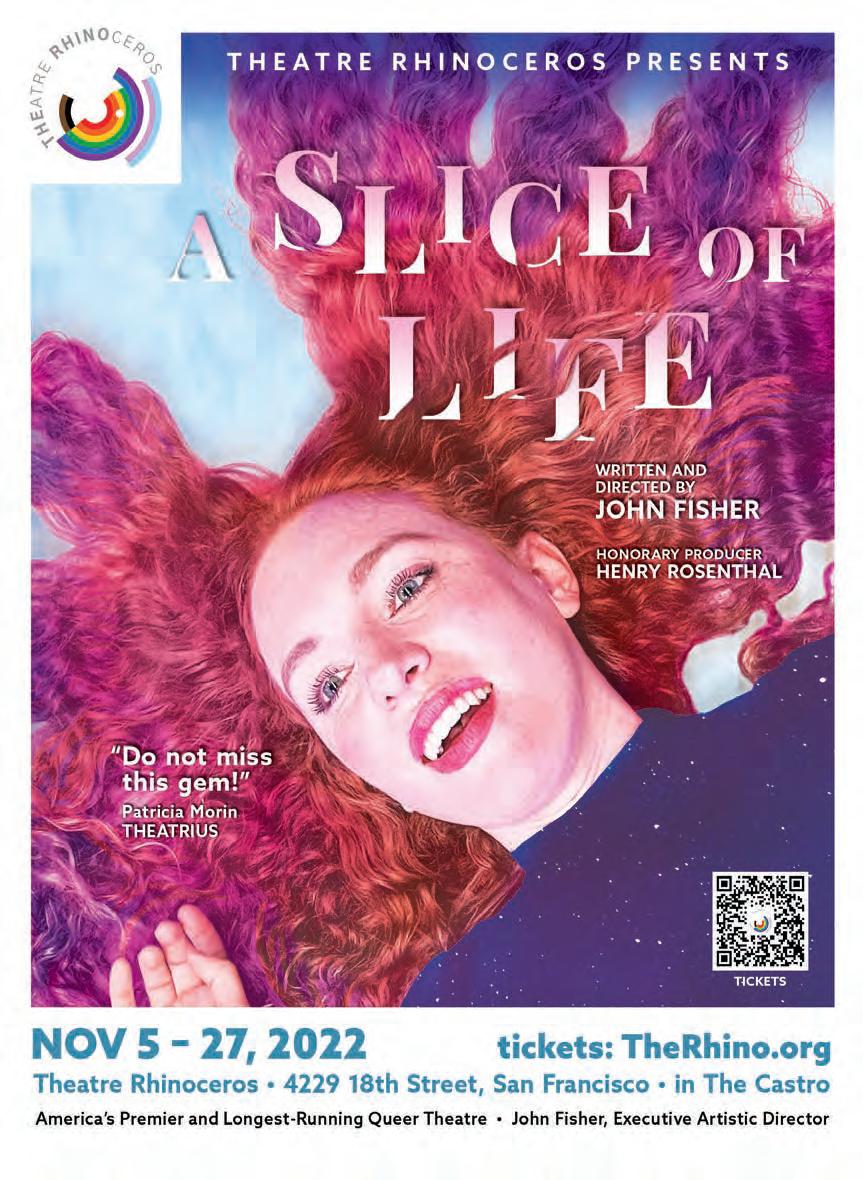
The documentary concludes with a series of significant career turning points for Tucker. Among those are her return to the concert stage, the warm reception the new album re ceived, including love from Grammy voters, and so much more.


It goes without saying that since the beginning of the 21st century, Carlile has been embraced by both the LG BTQ+ and straight communities alike. However, if you weren’t a Tanya Tuck er fan before, this doc has the potential to make you one. Rating: B+t
www.sonyclassics.com
November 17-23, 2022 • Bay area reporter • 19 It’s Tucker’s
t Music >> GET TICKETS: SFPLAYHOUSE.ORG 415-677-9596 450 POST STREET AT POWELL ON UNION SQUARE
time
“If you describe things as better than they are, you are considered to be a romantic.
If you describe things as worse than they are, you will be called a realist.
—Quentin
If you describe things exactly as they are, you will be thought of as a satirist.”
Crisp
Tanya Tucker and Brandi Carlile























































JOB #: GRT-18337 NOV_BAY AREA ALL IN PRINT US 101 TO EXIT 484. 288 GOLF COURSE DRIVE WEST, ROHNERT PARK, CA P 707.588.7100 PLAY WITHIN YOUR LIMITS. IF YOU THINK YOU HAVE A GAMBLING PROBLEM, CALL 1-800-GAMBLER FOR HELP. ROHNERT PARK, CA. © 2022 GRATON RESORT & CASINO IT’S All In ONE PLACE LUXURIOUS ROOMS WORLD-CLASS SPA & SALON RESORT-STYLE POOL AWARD-WINNING DINING LIVE ENTERTAINMENT One amazing destination, so many reasons to experience it.




















































































































































